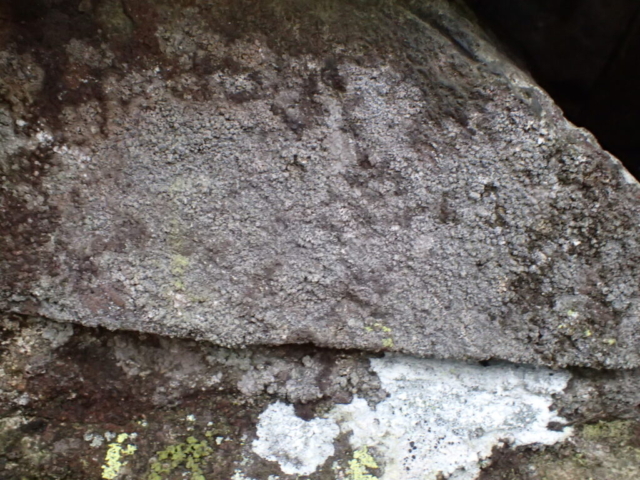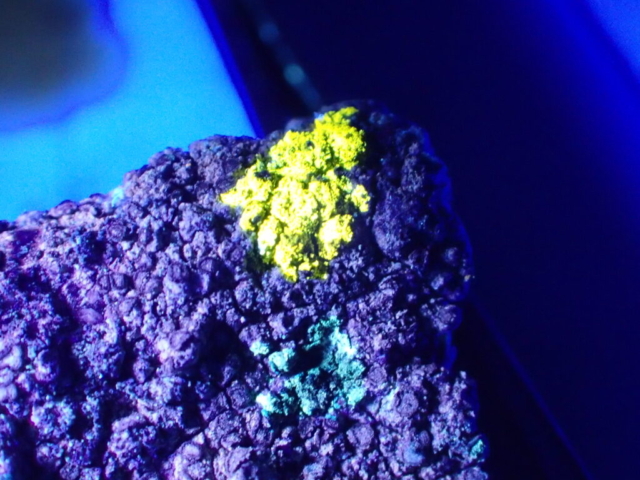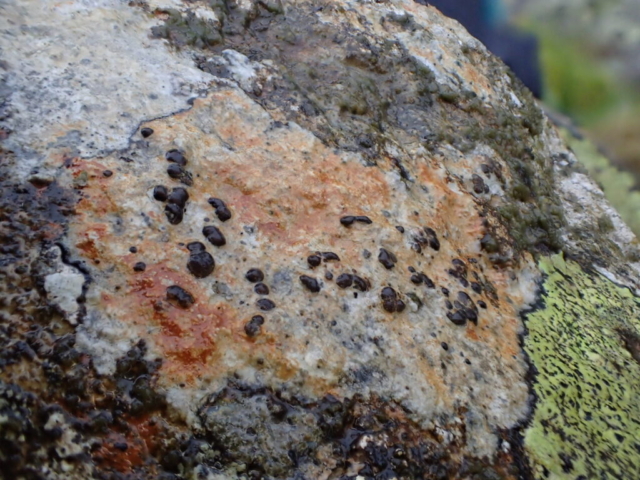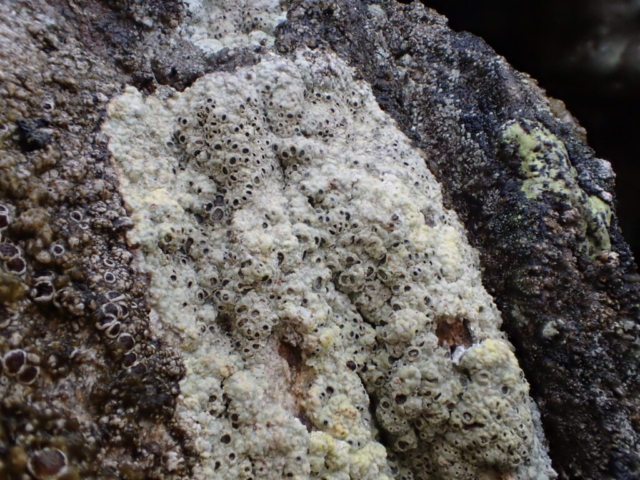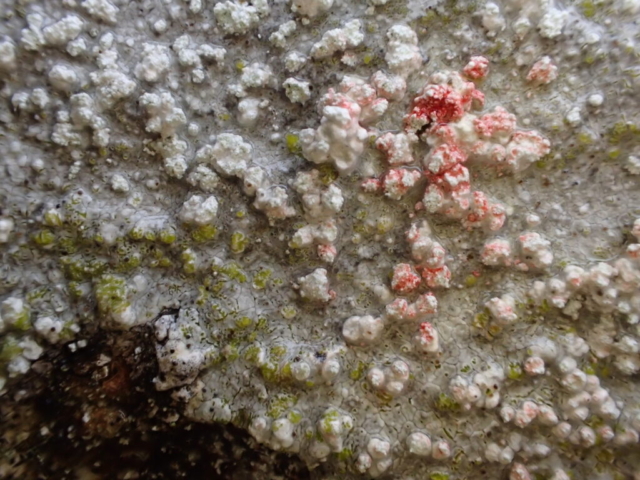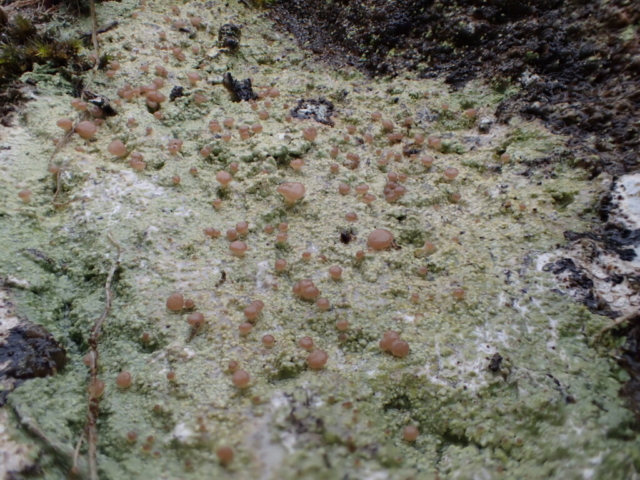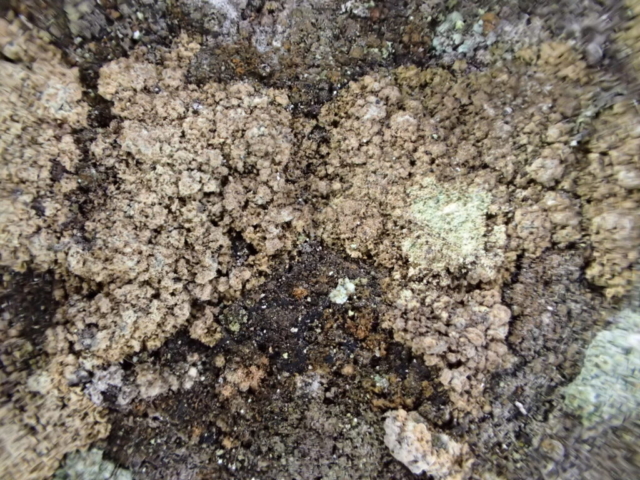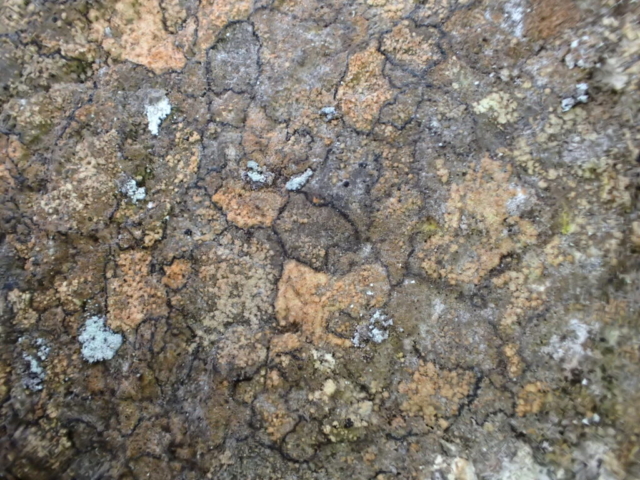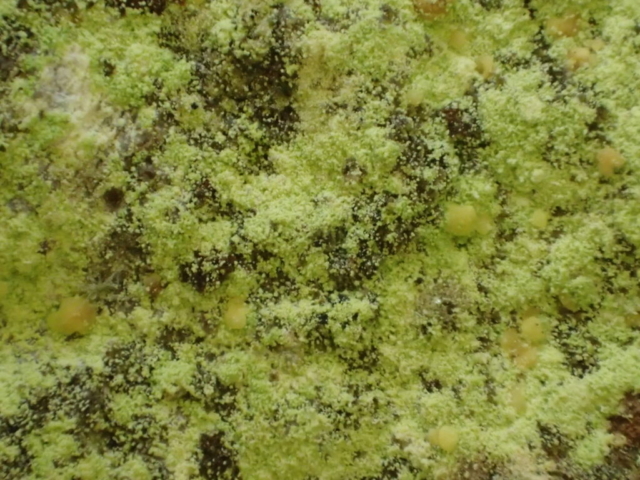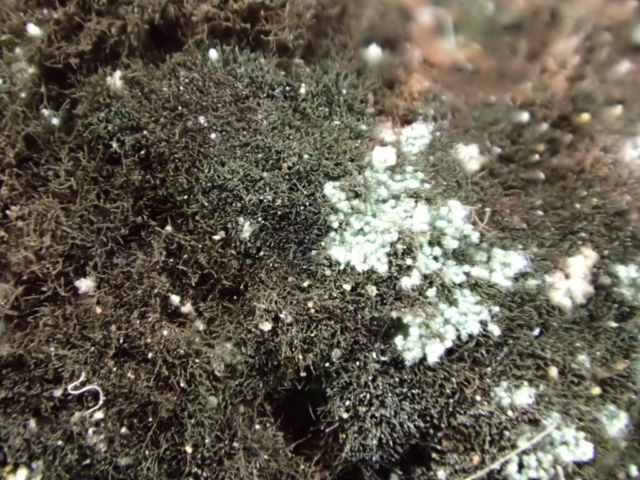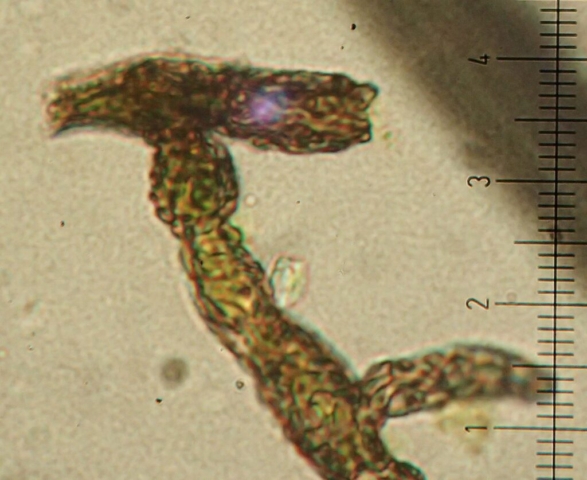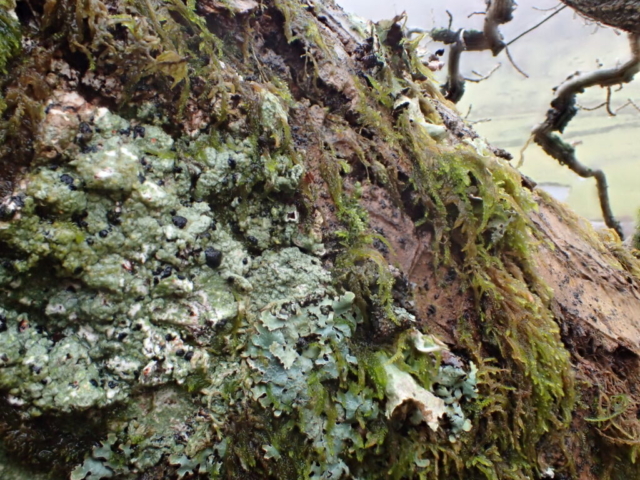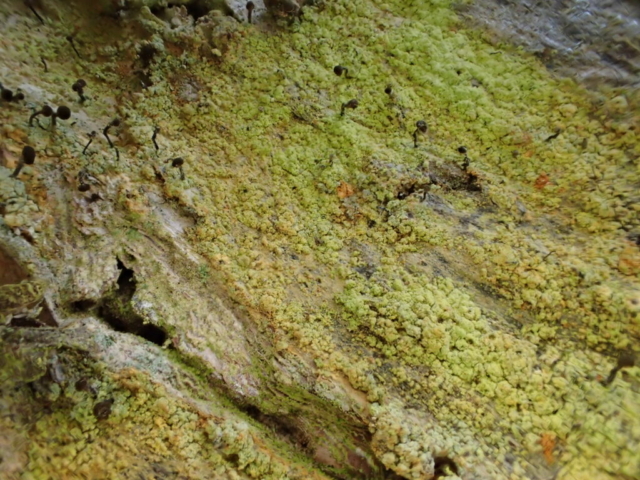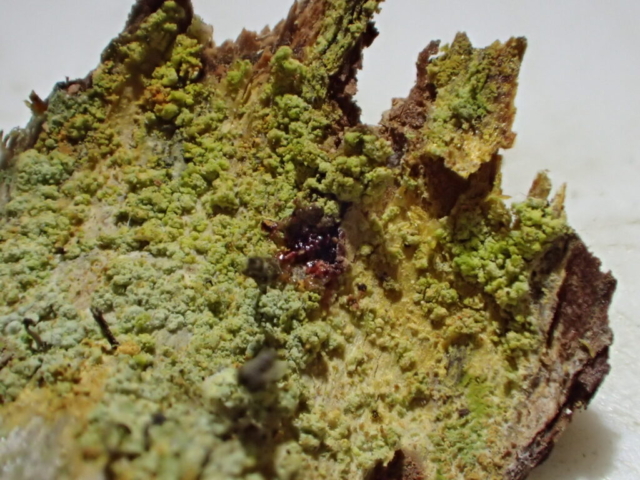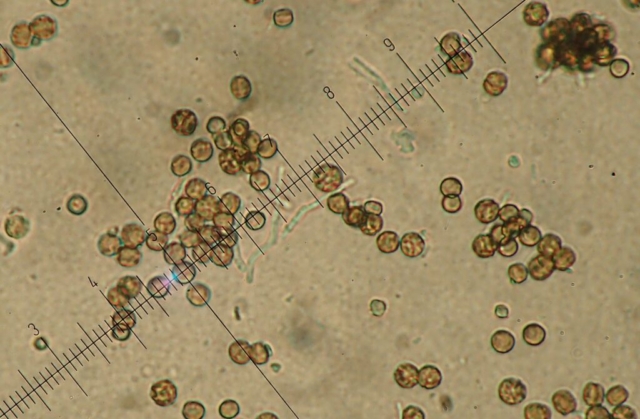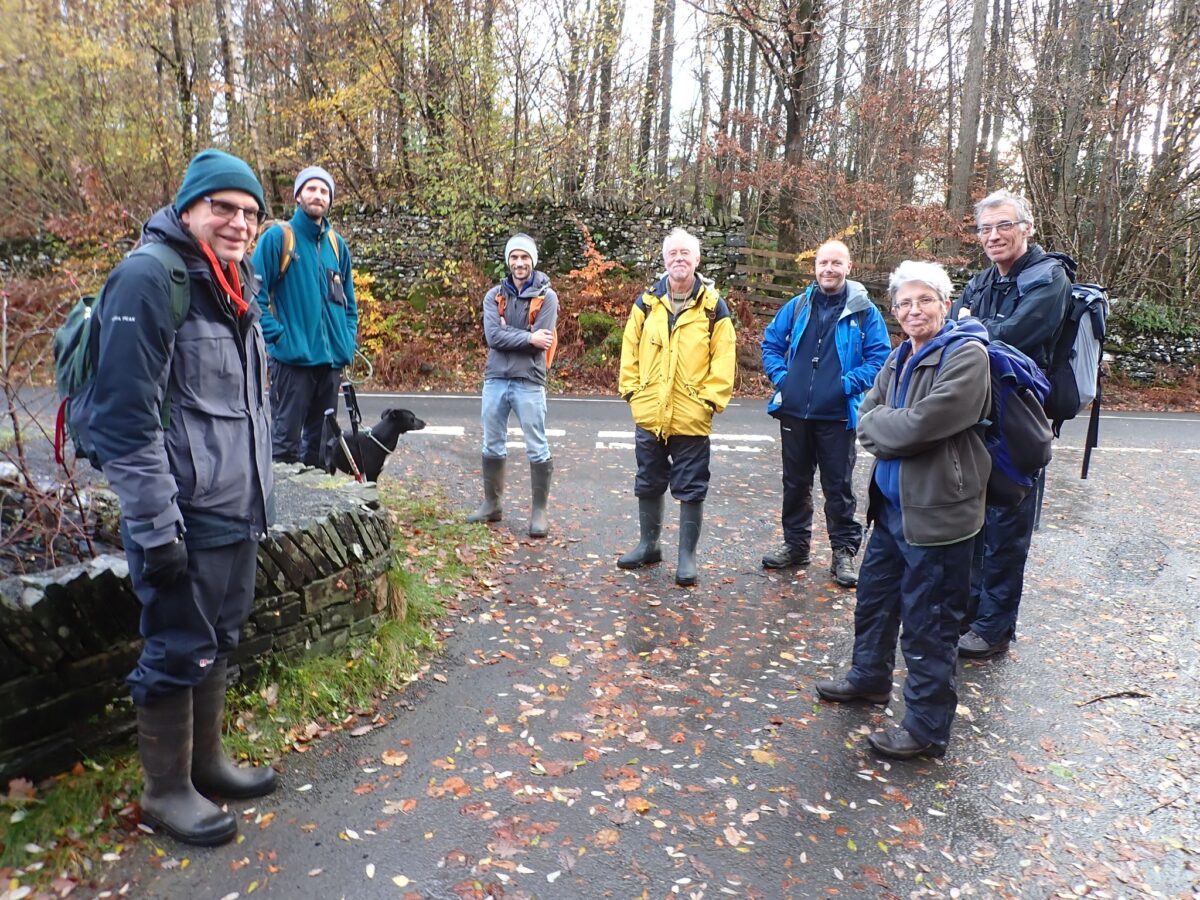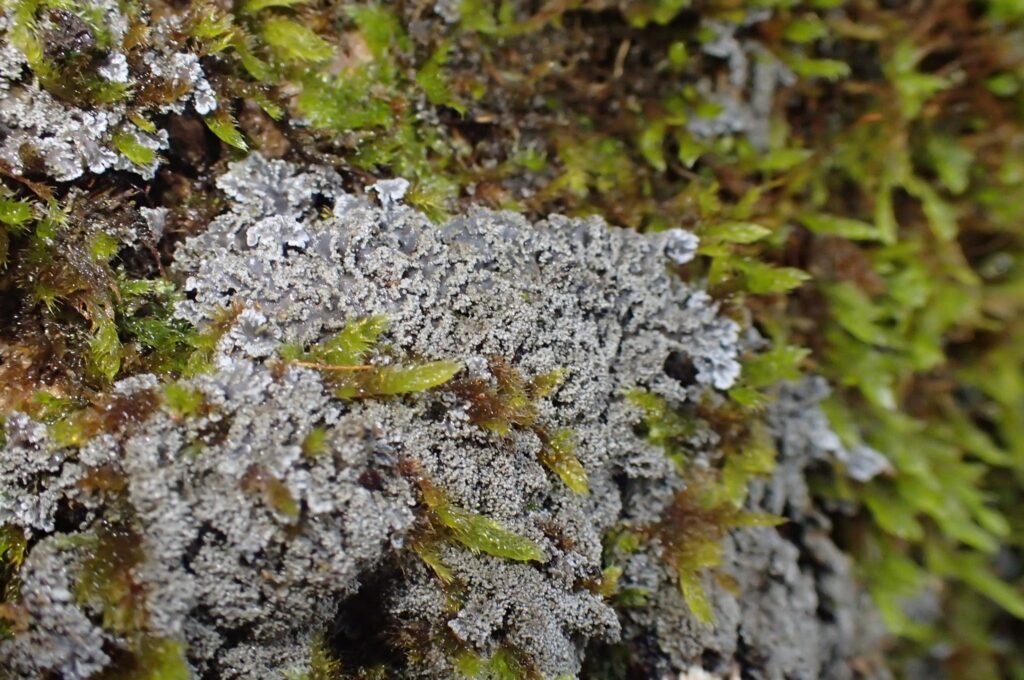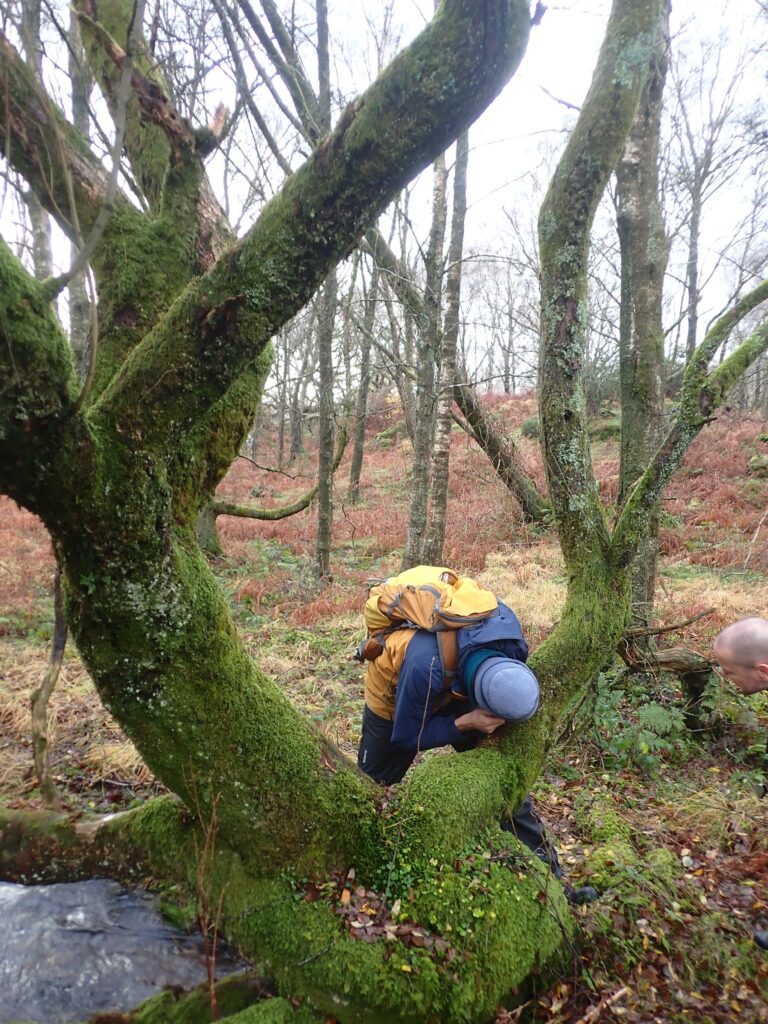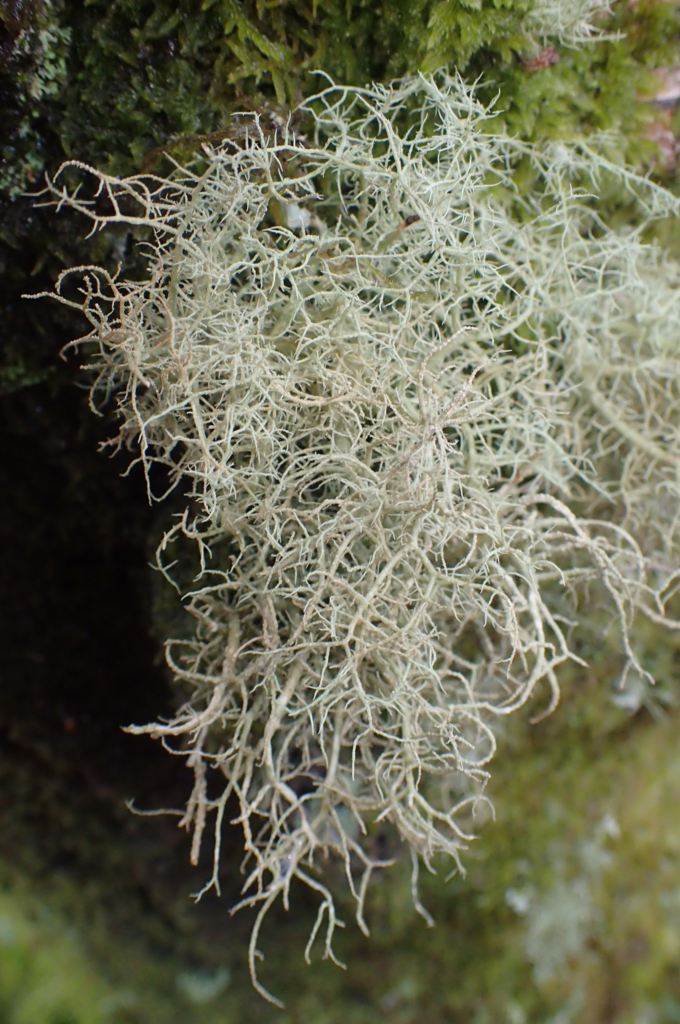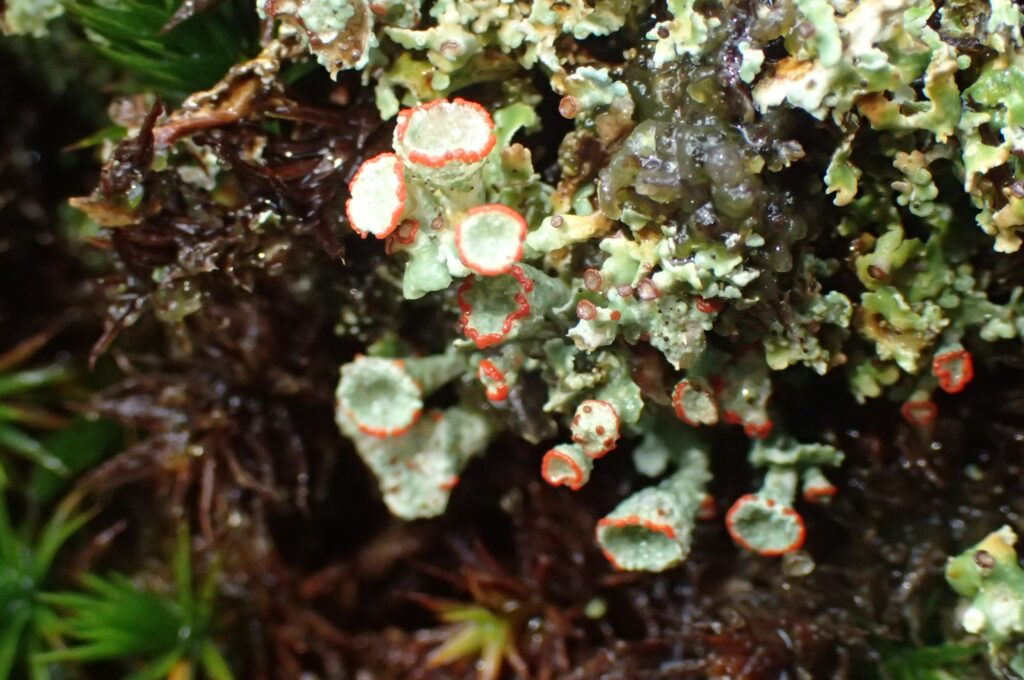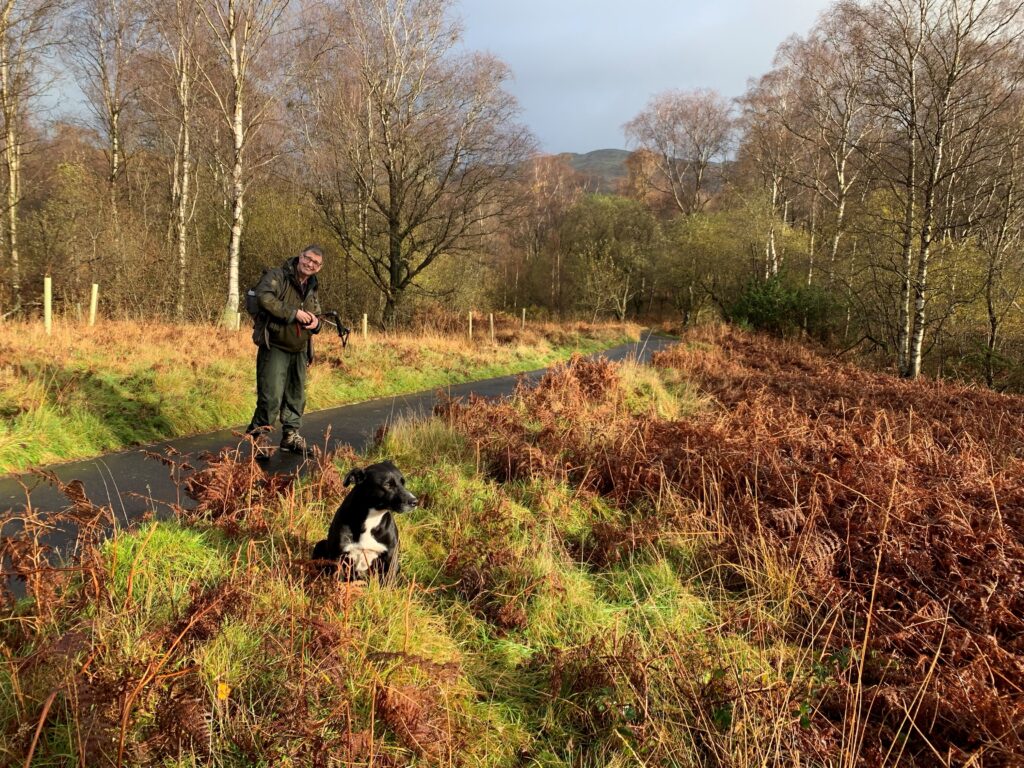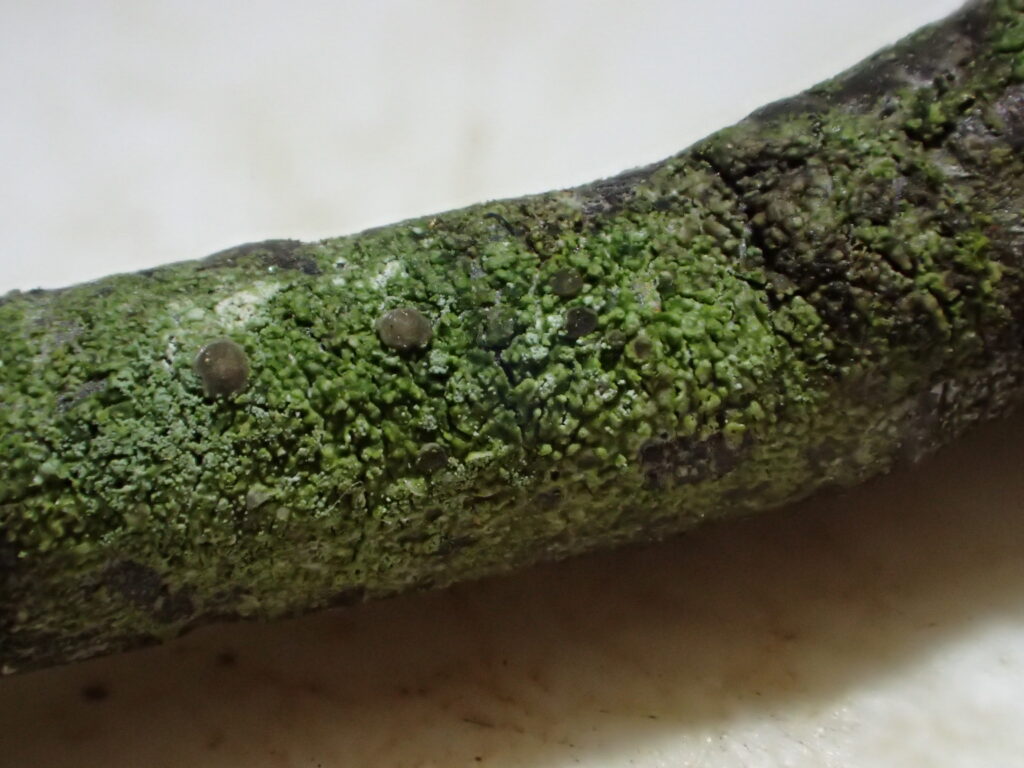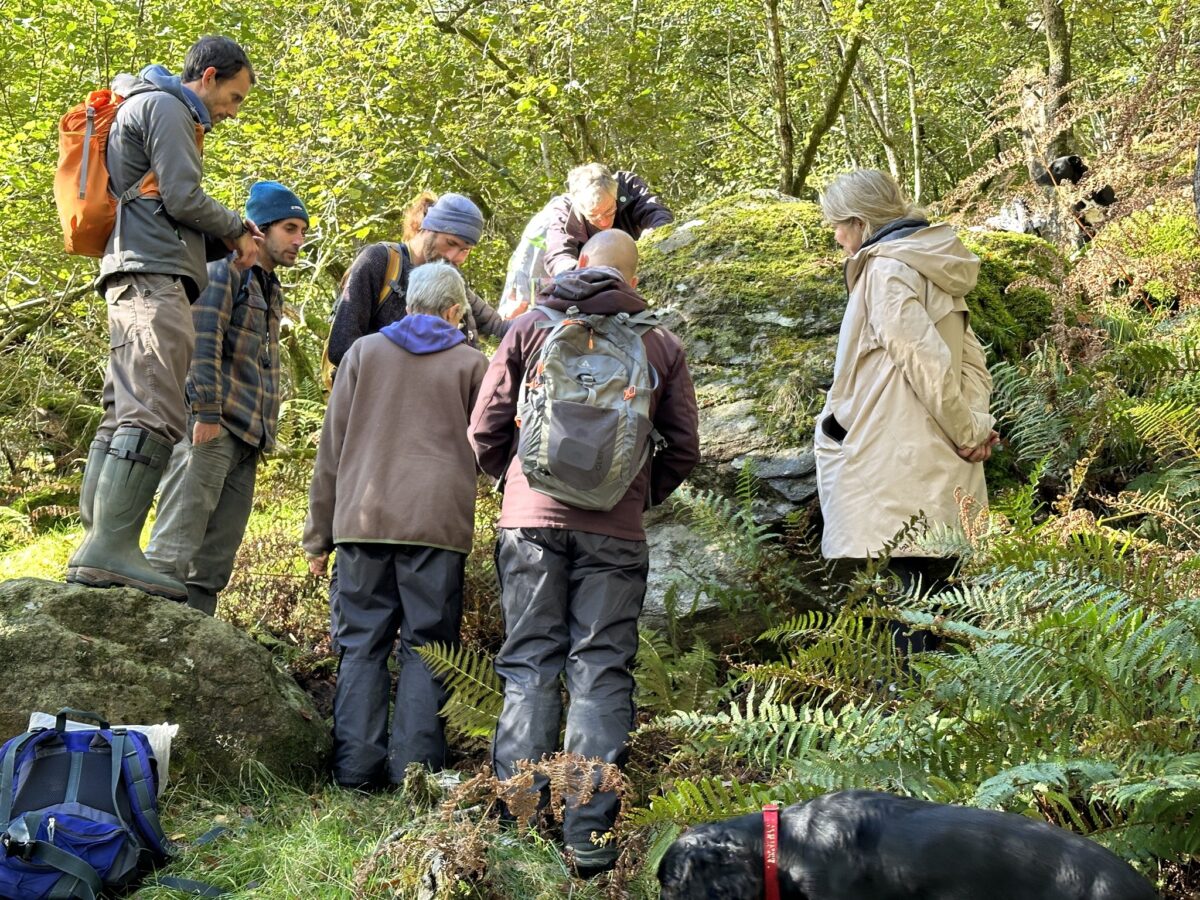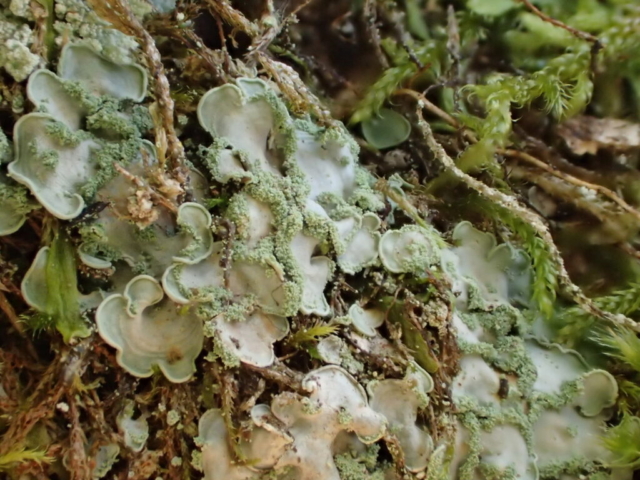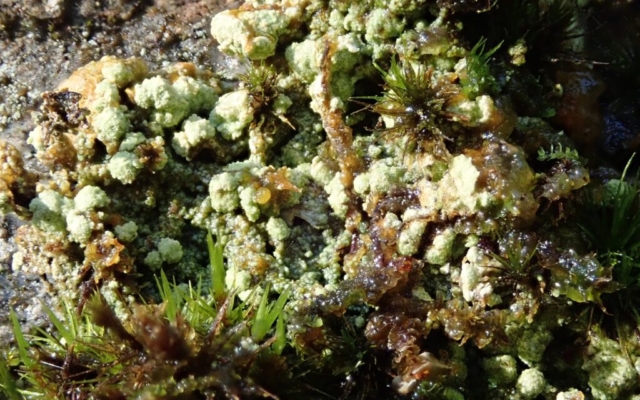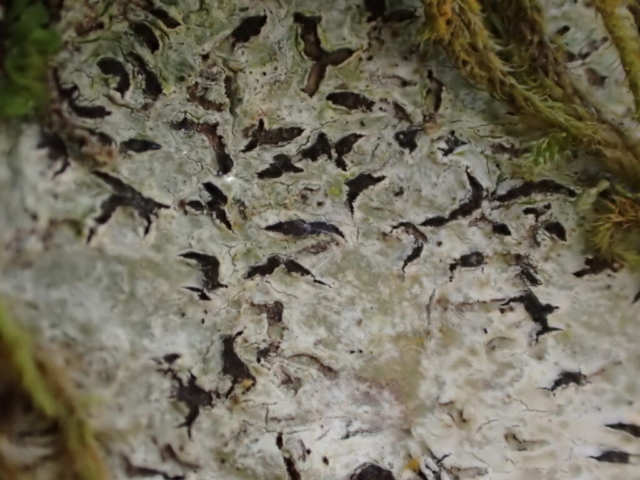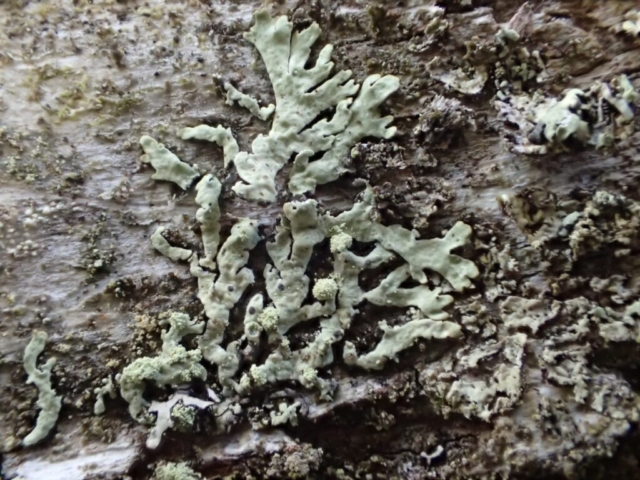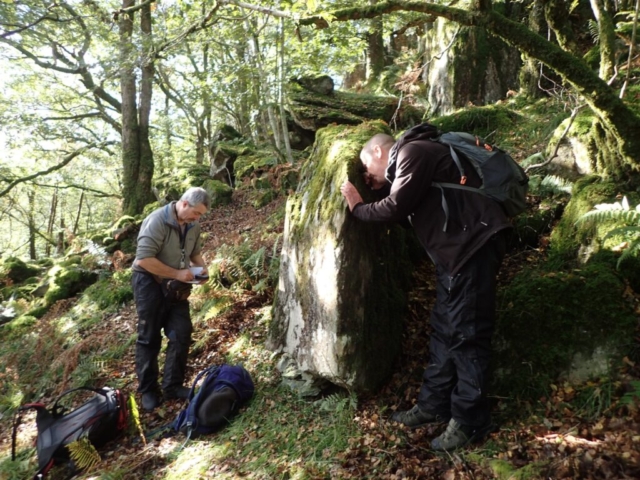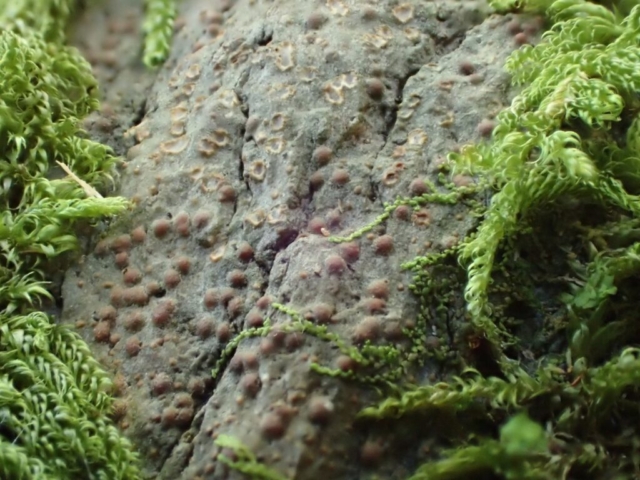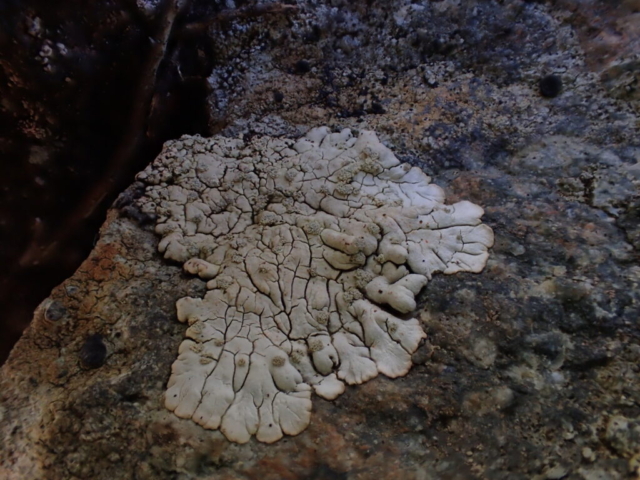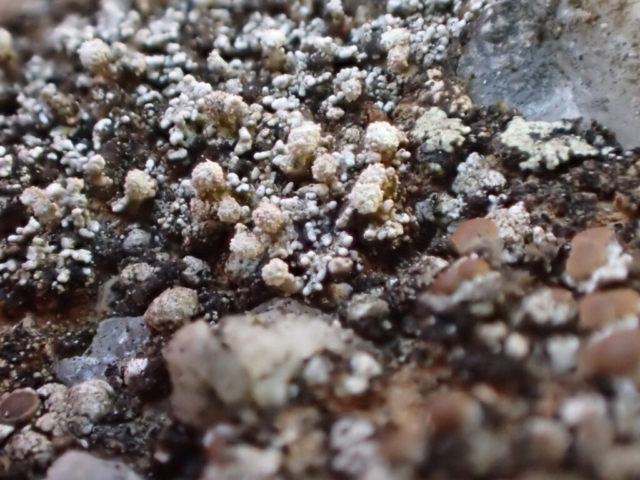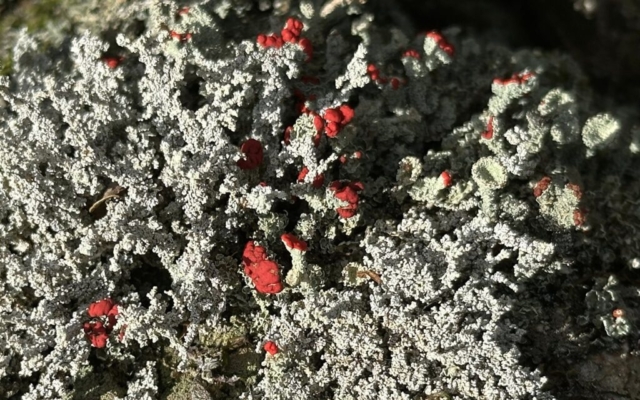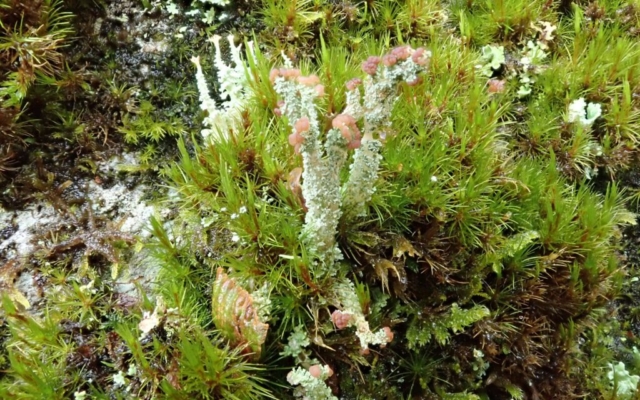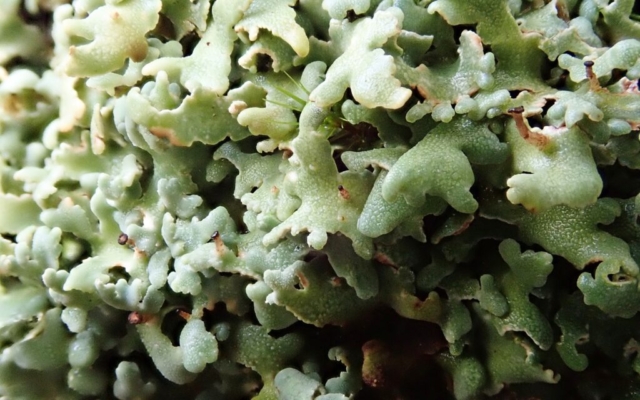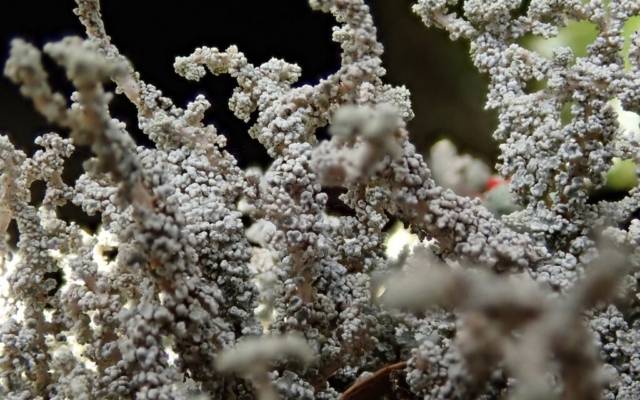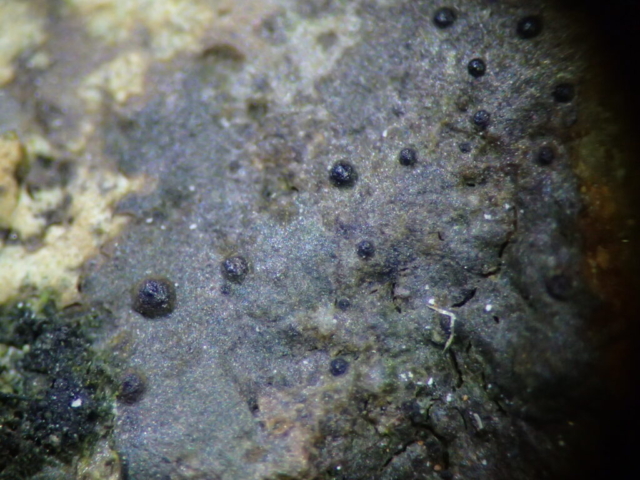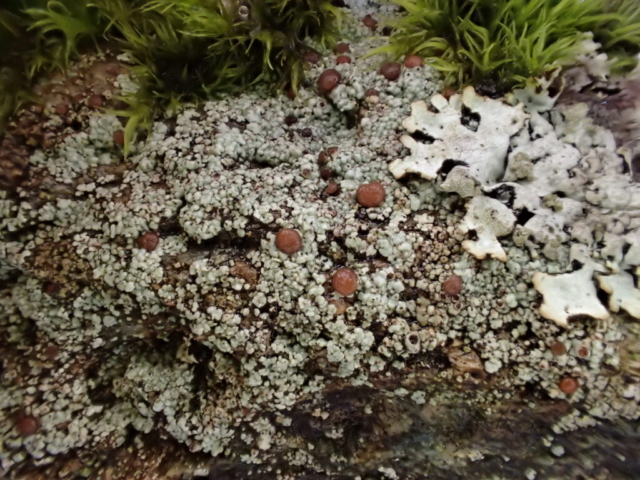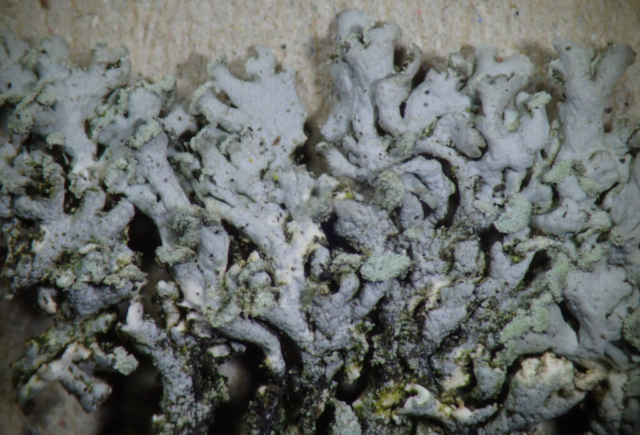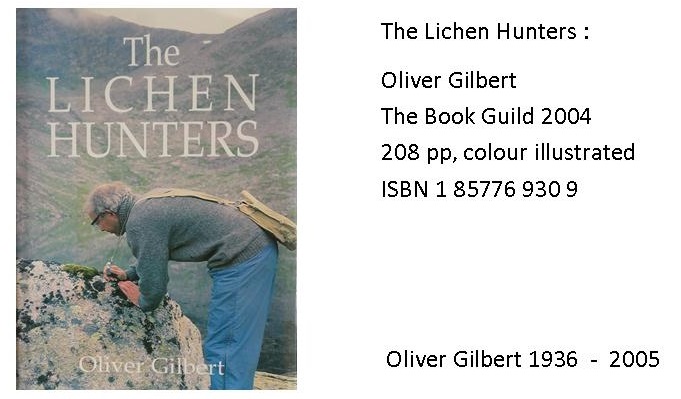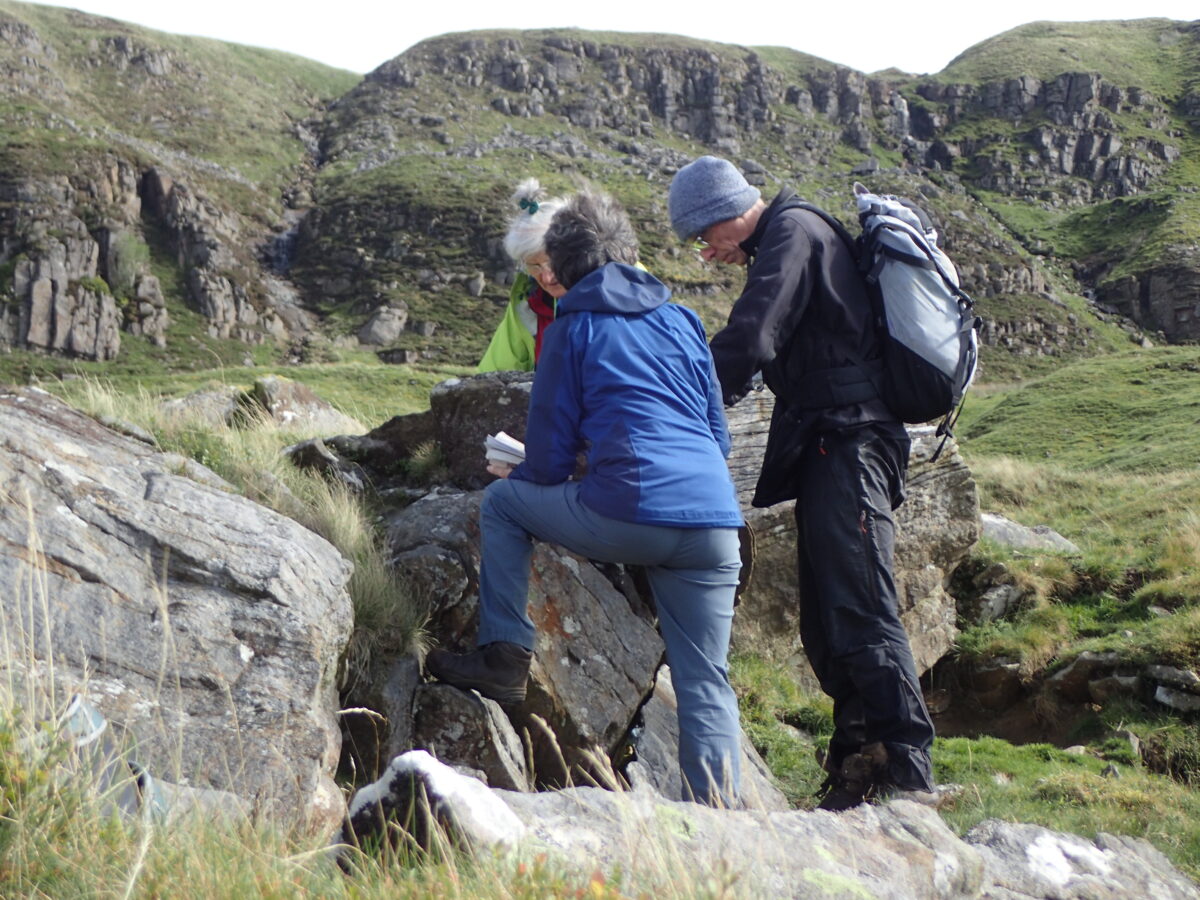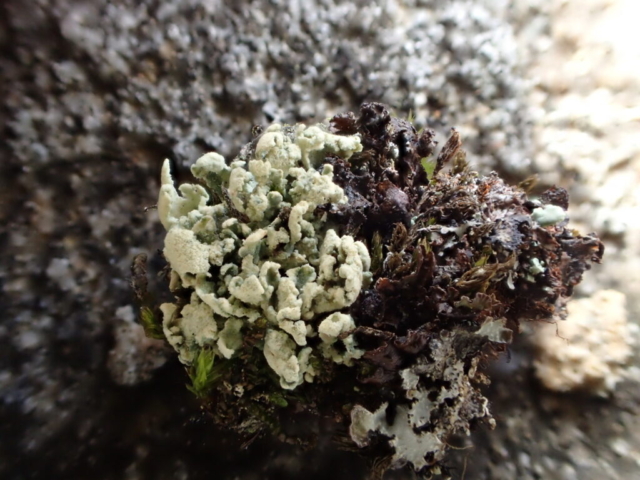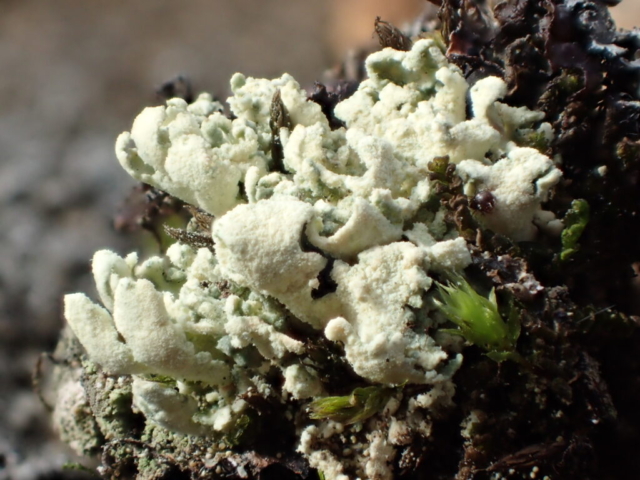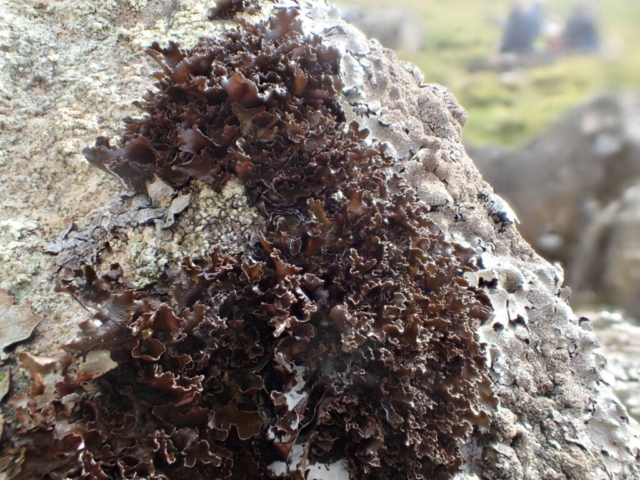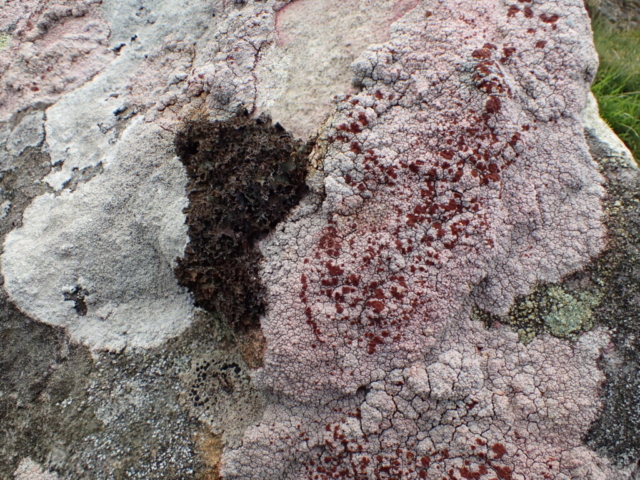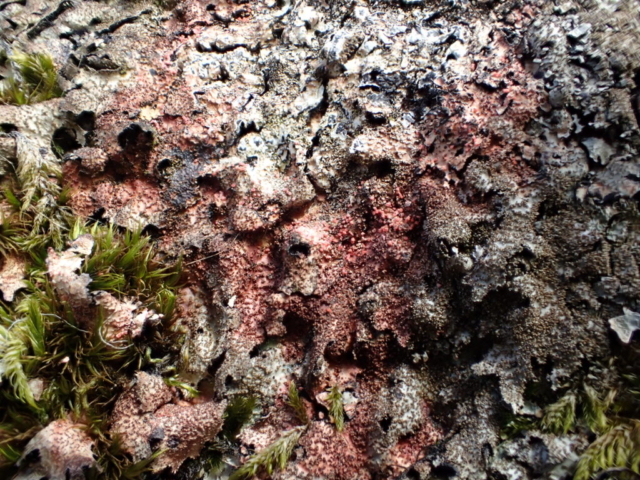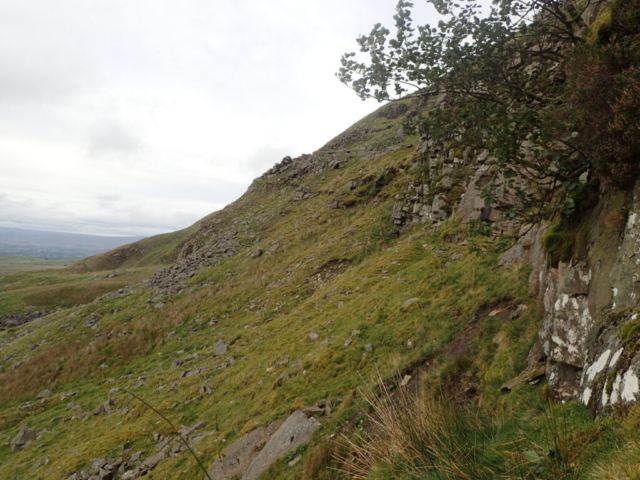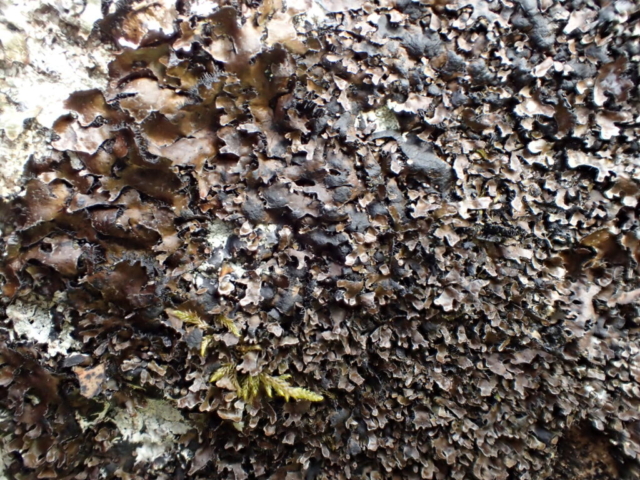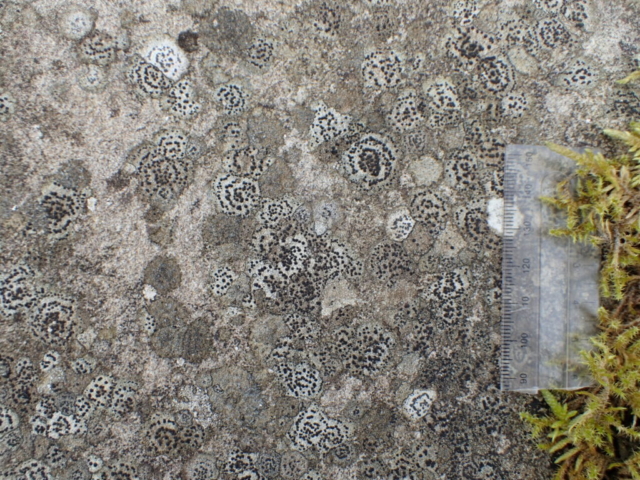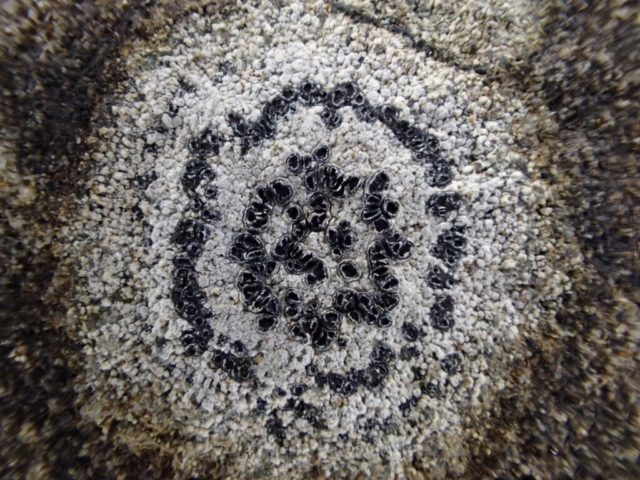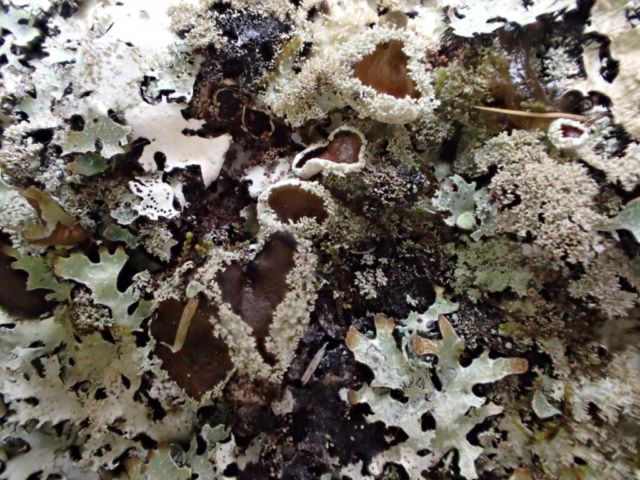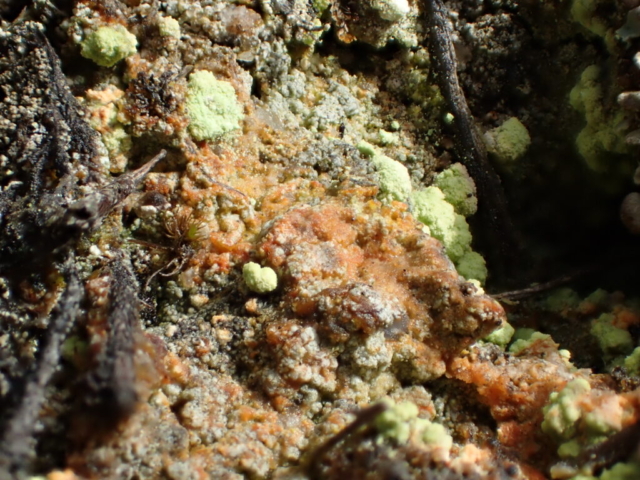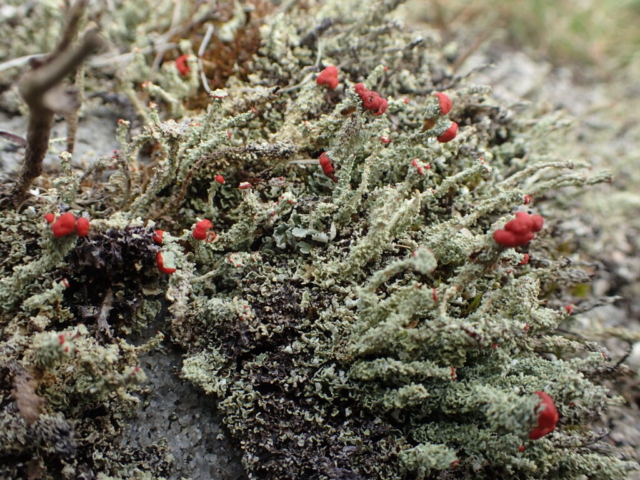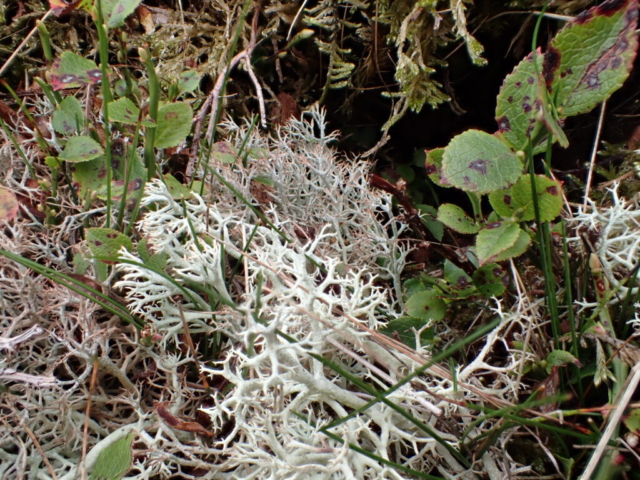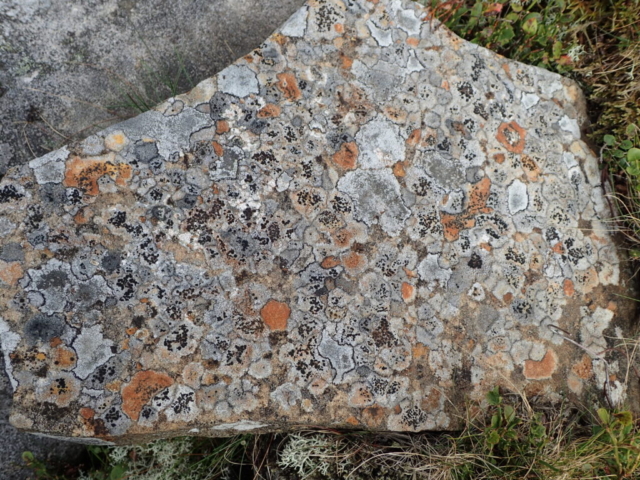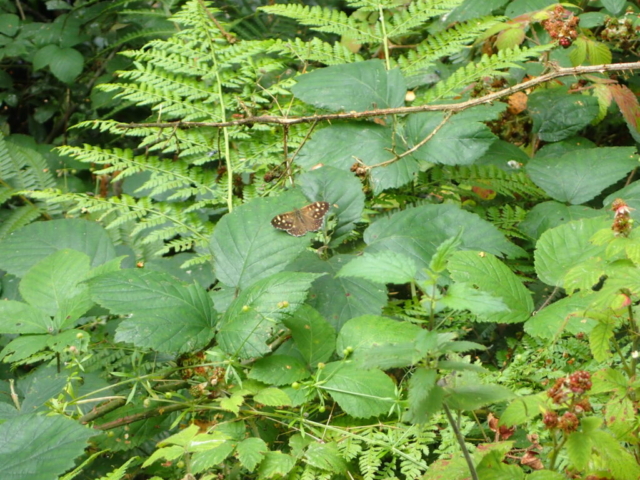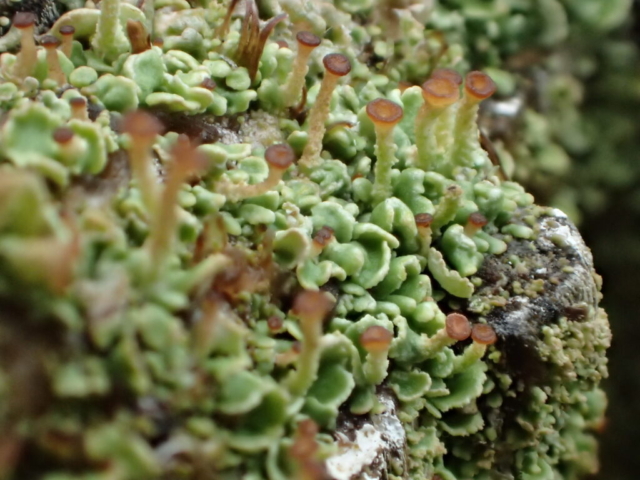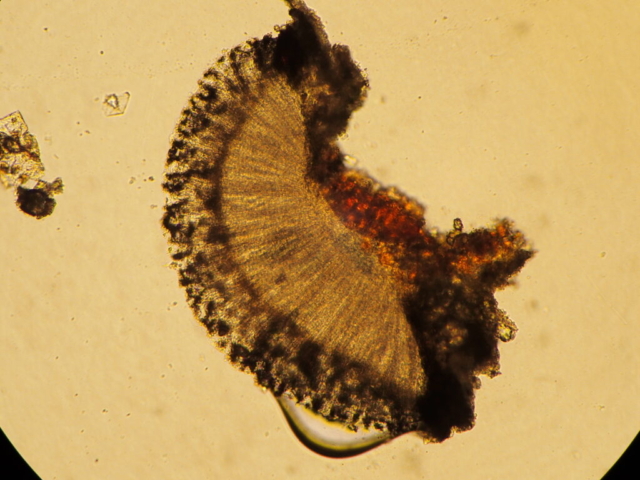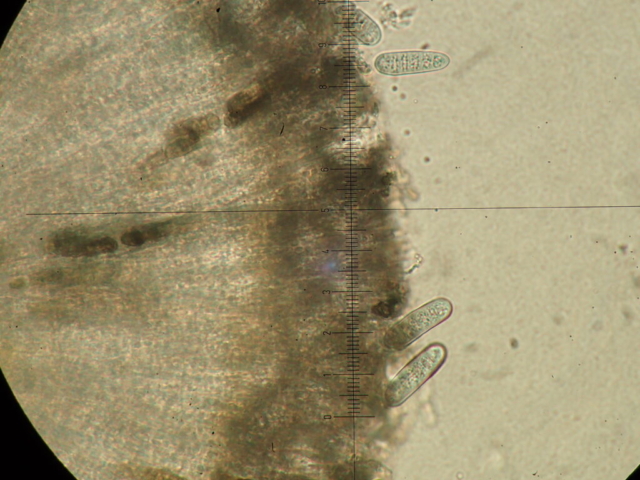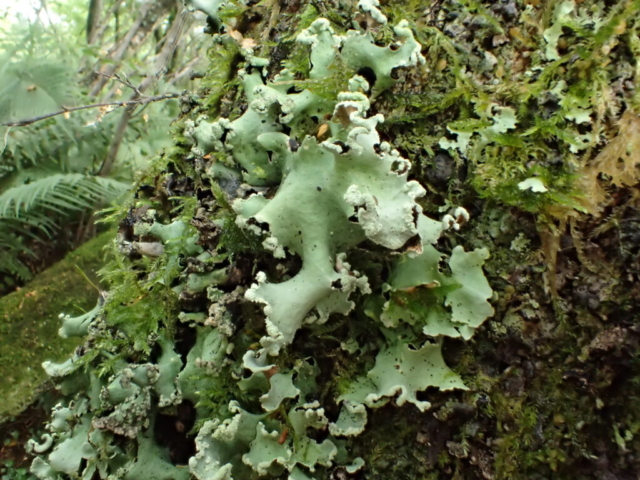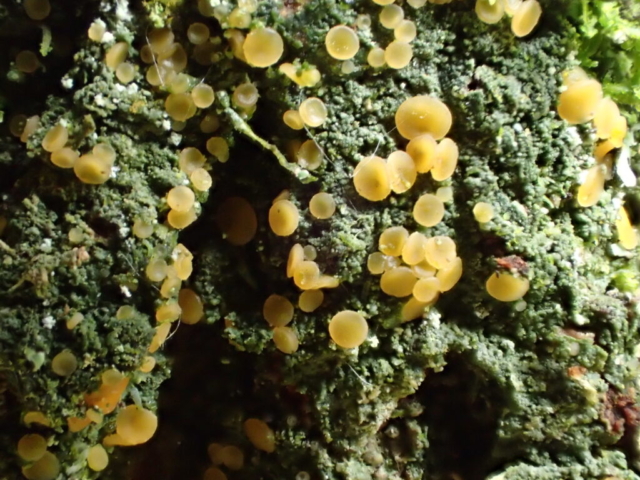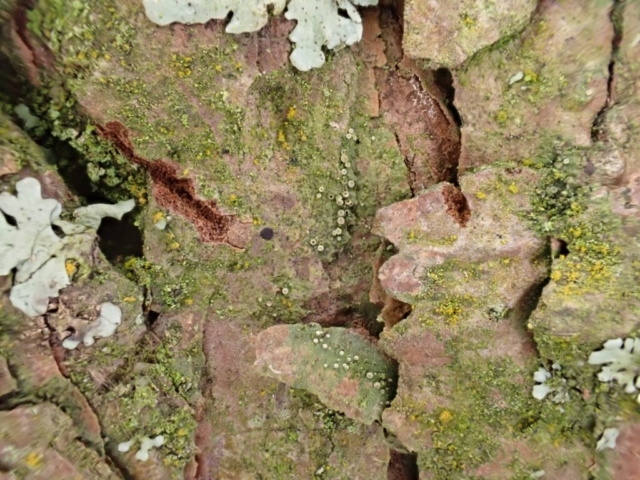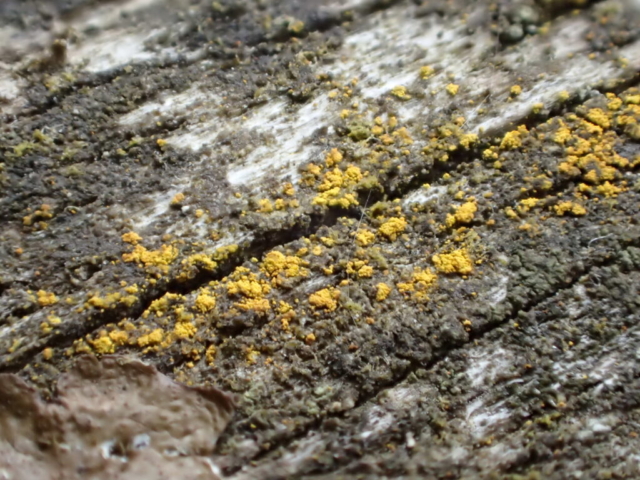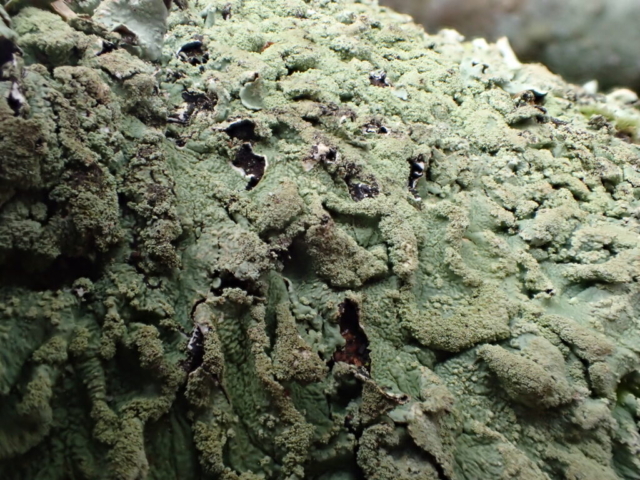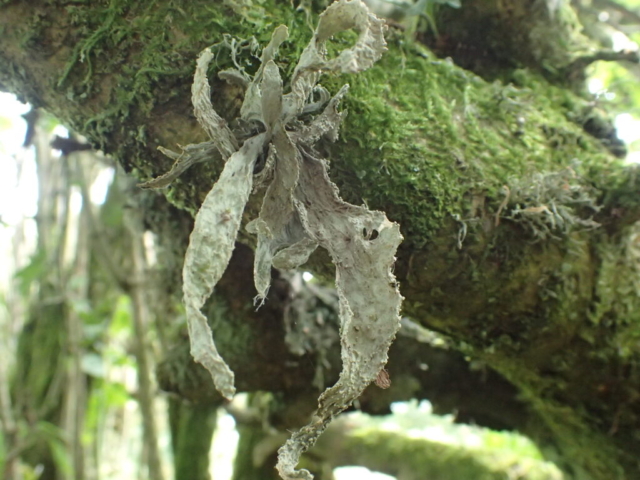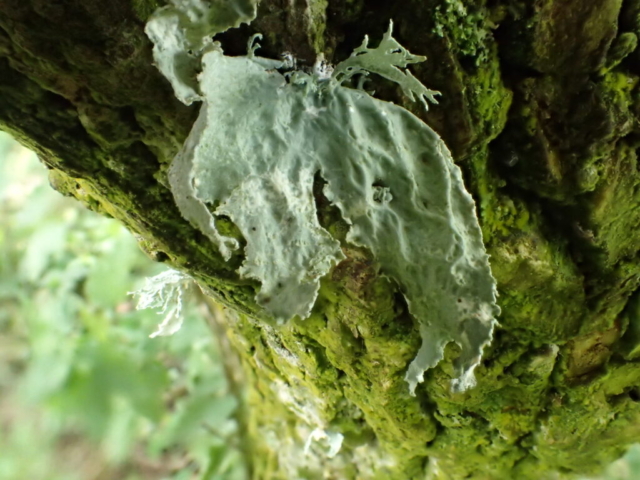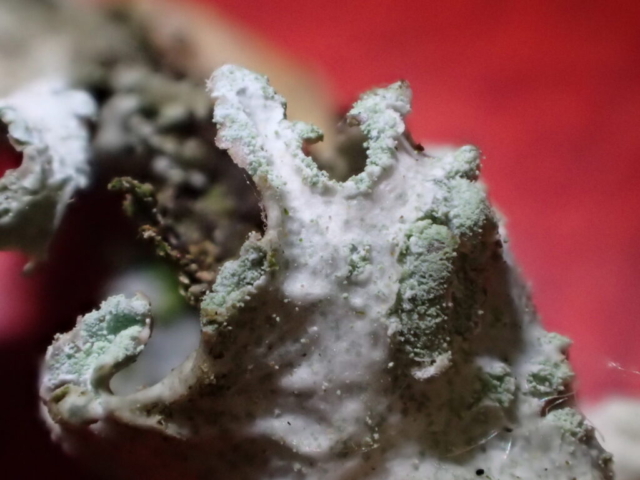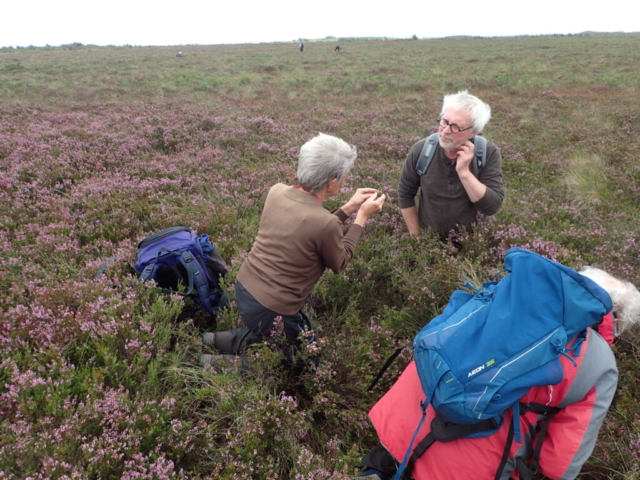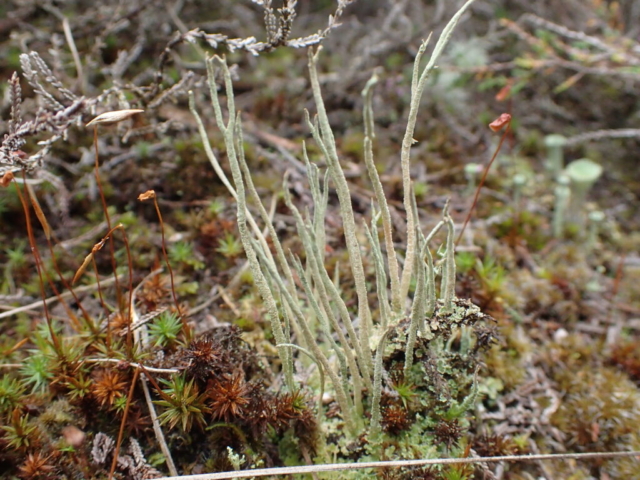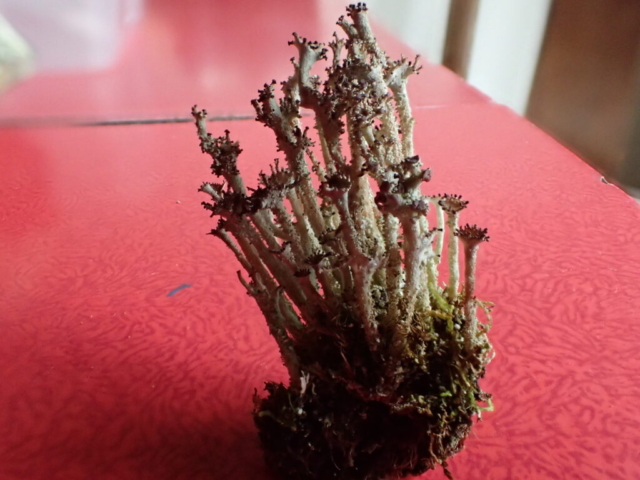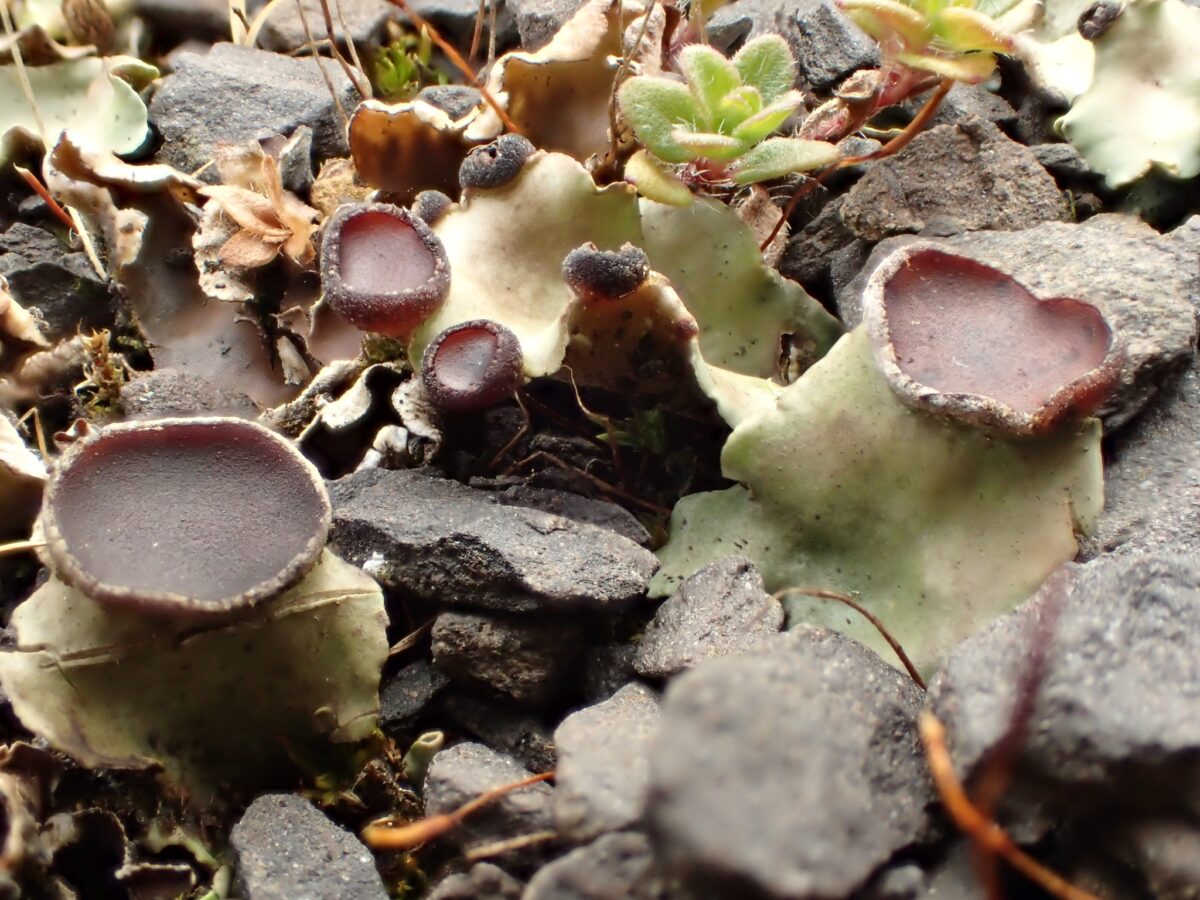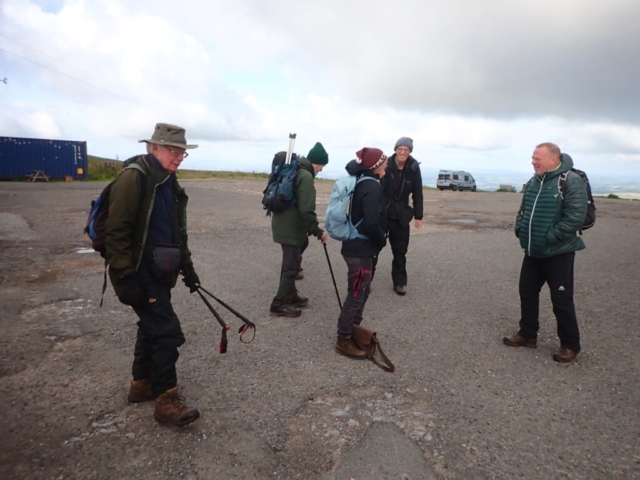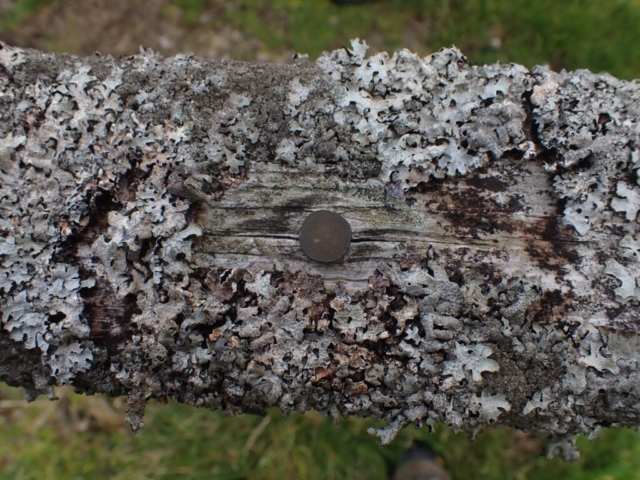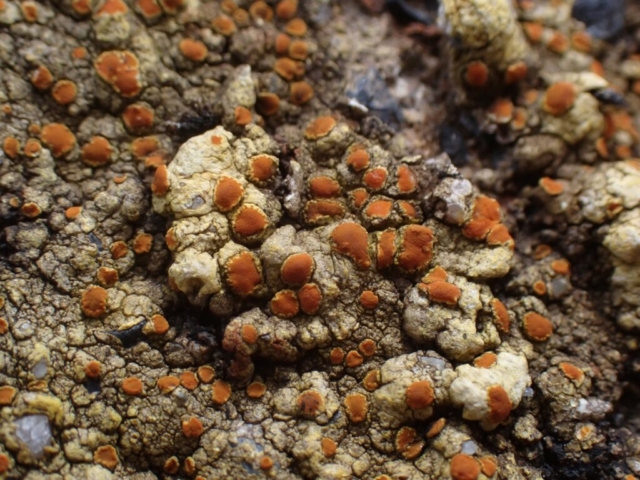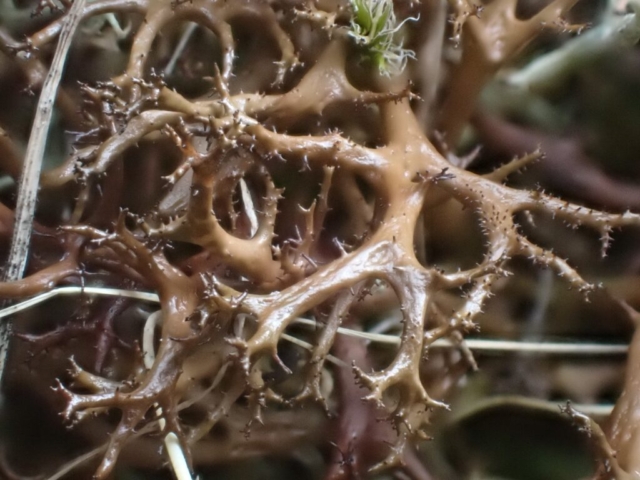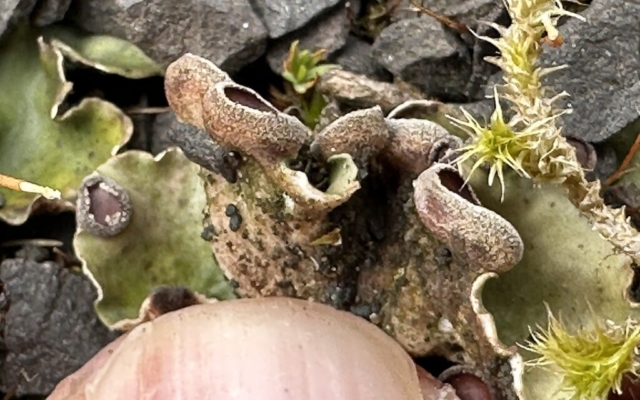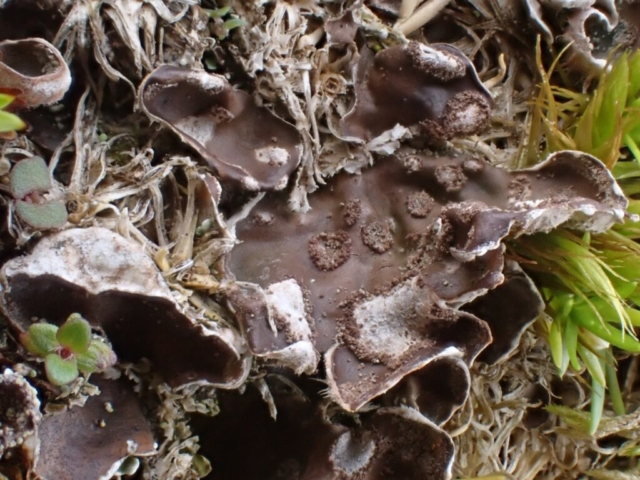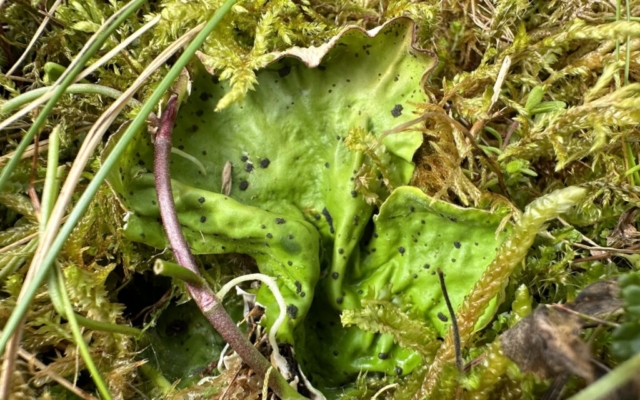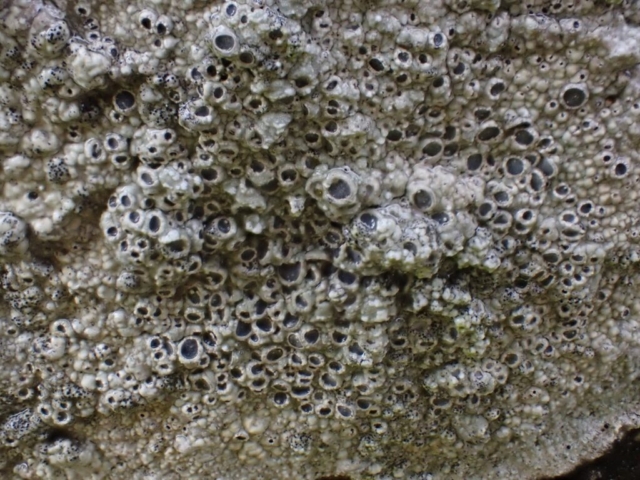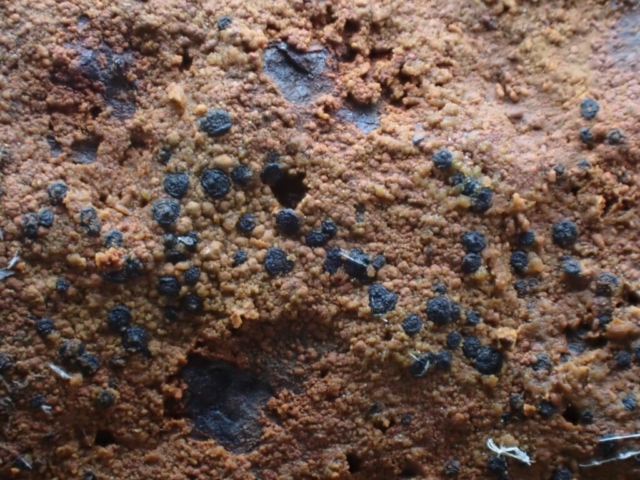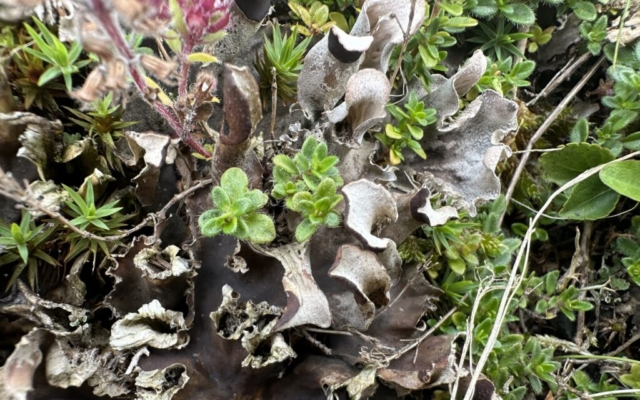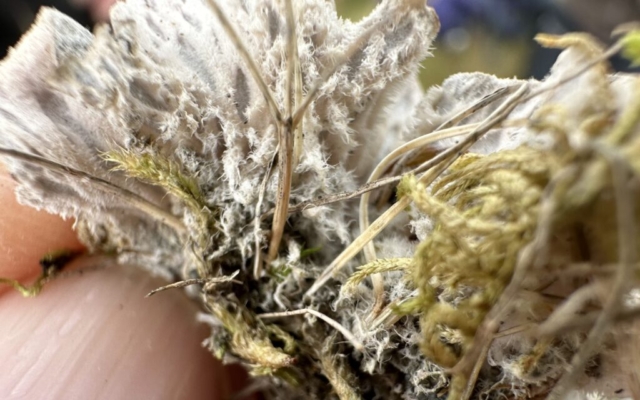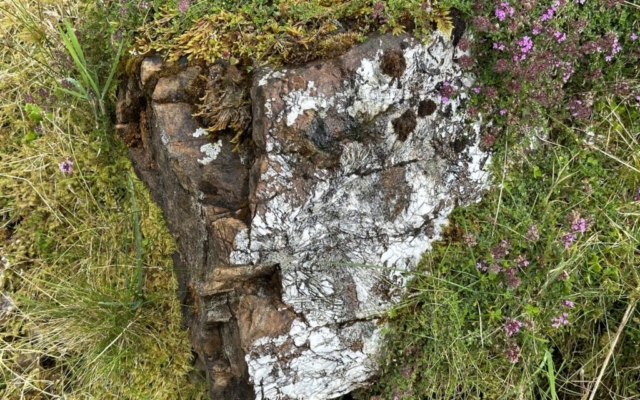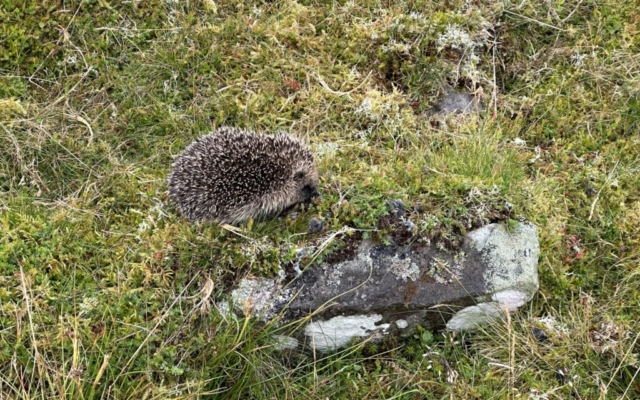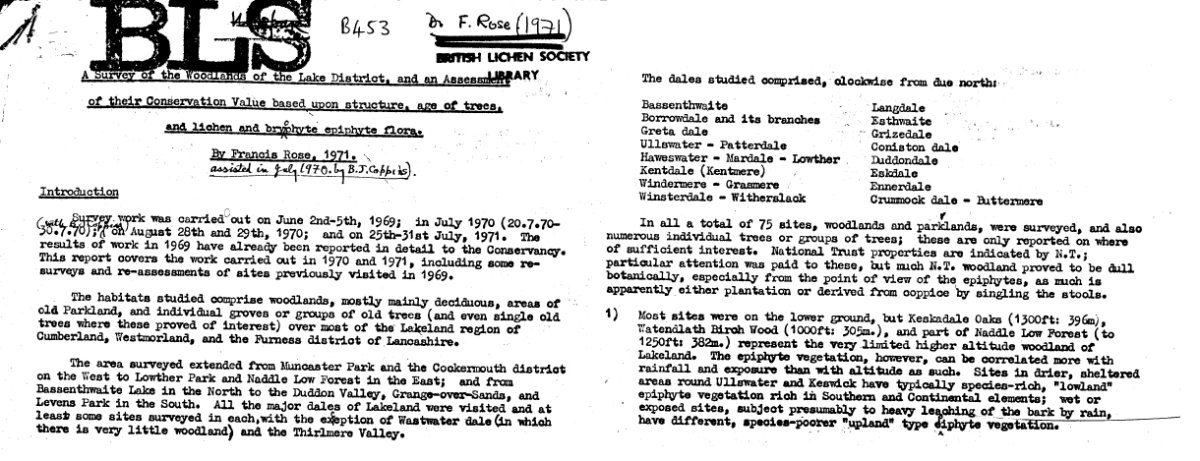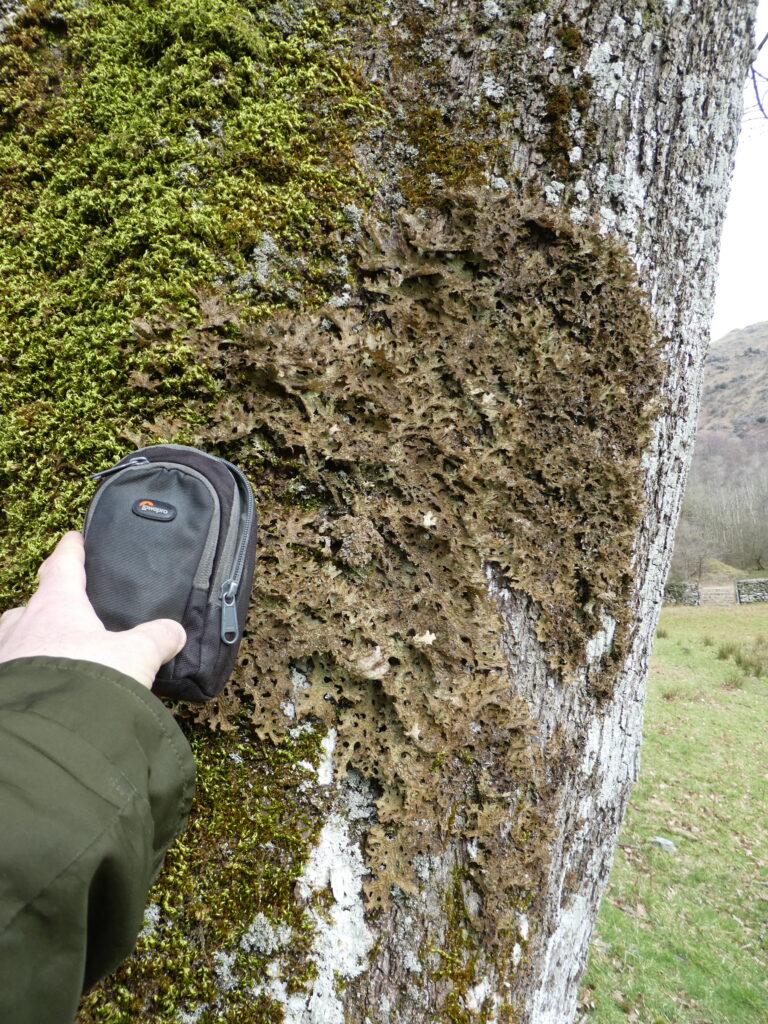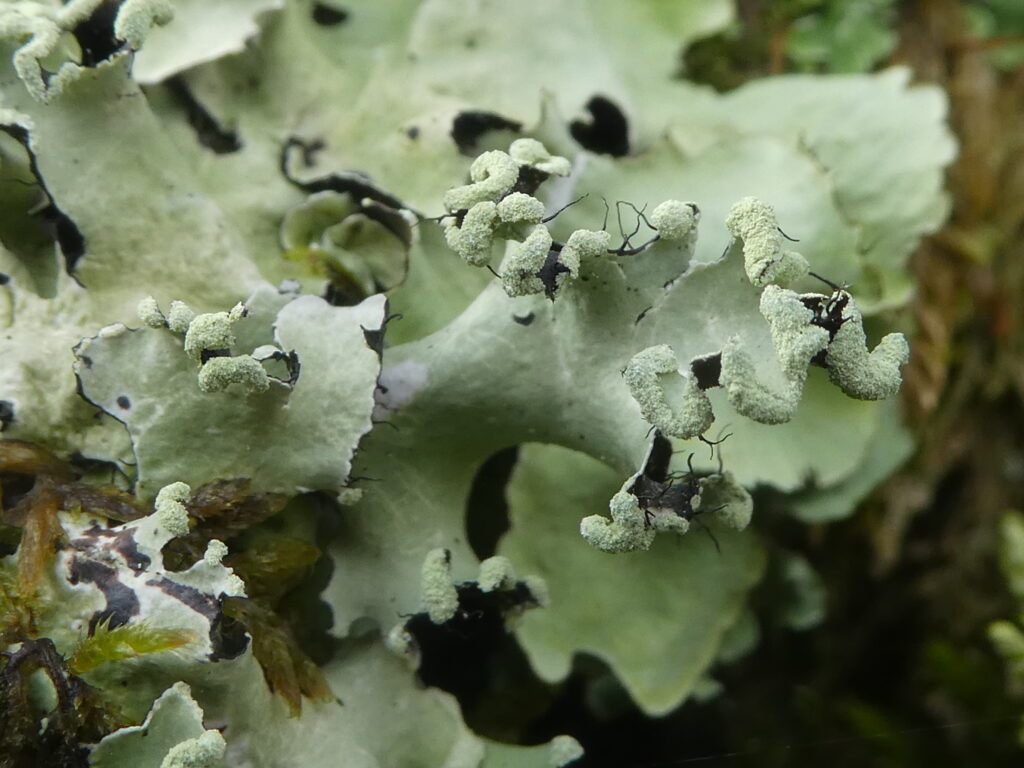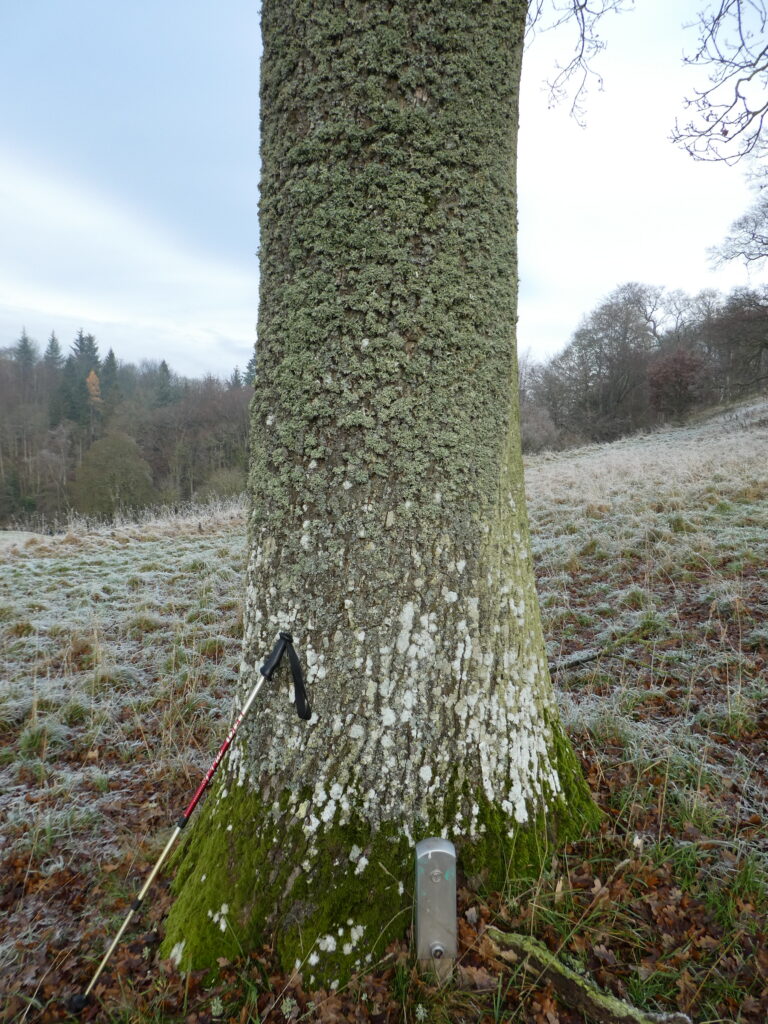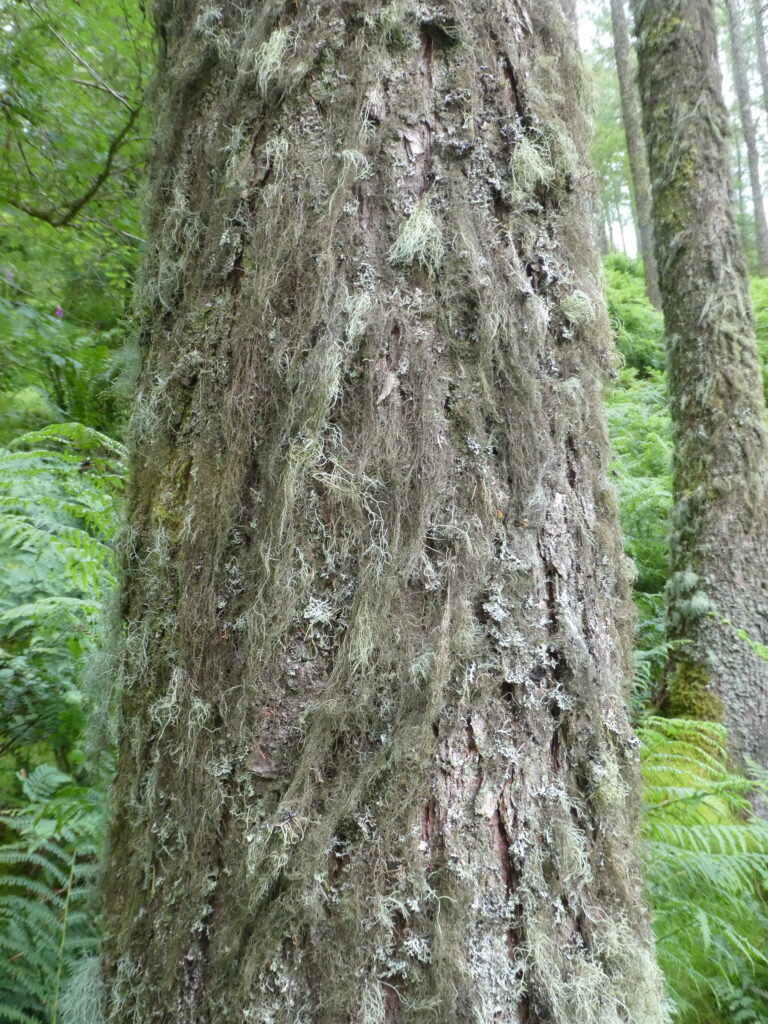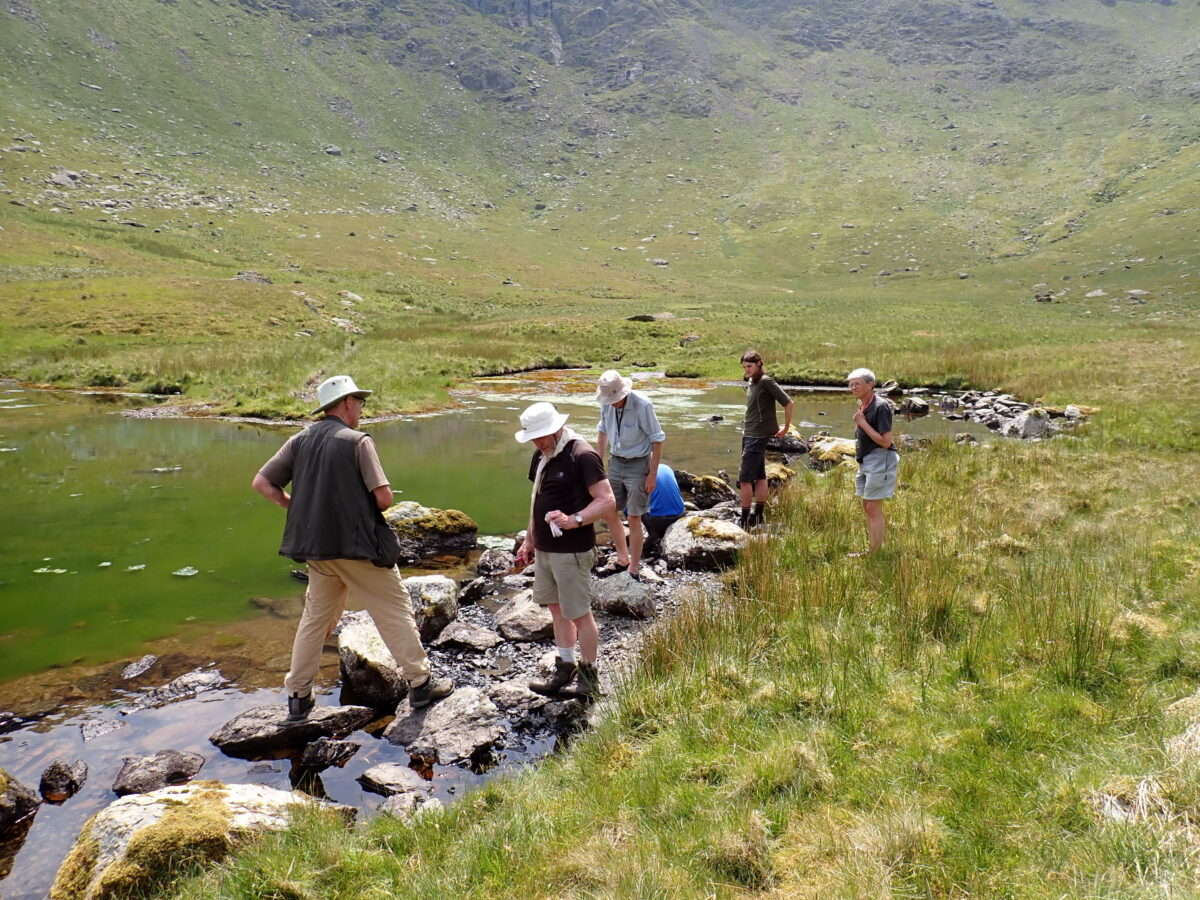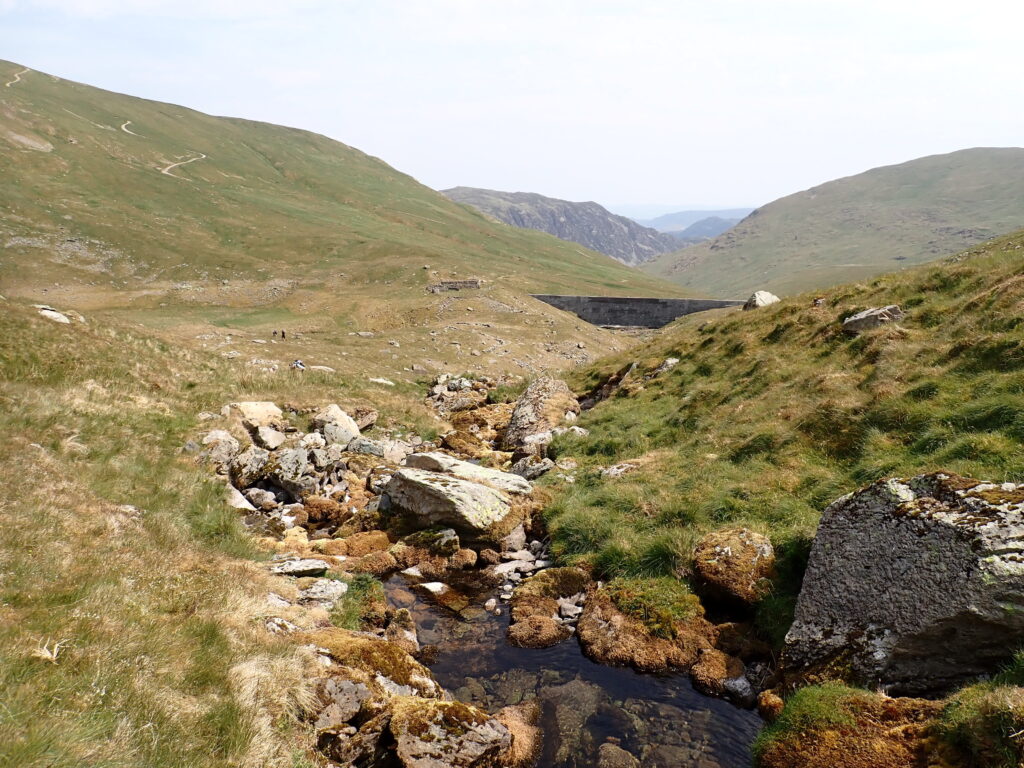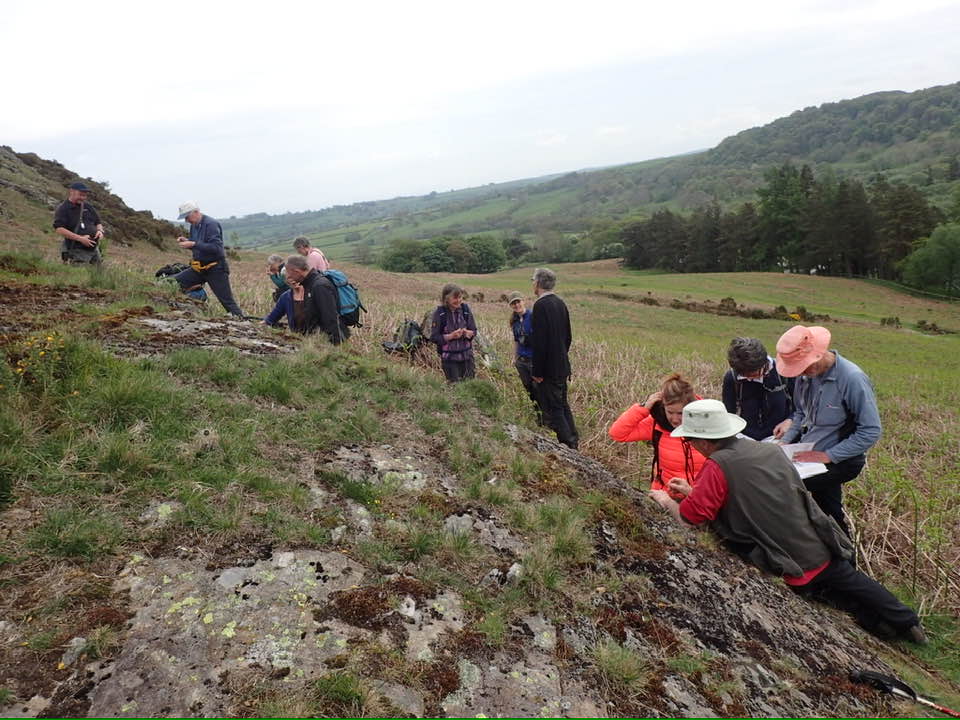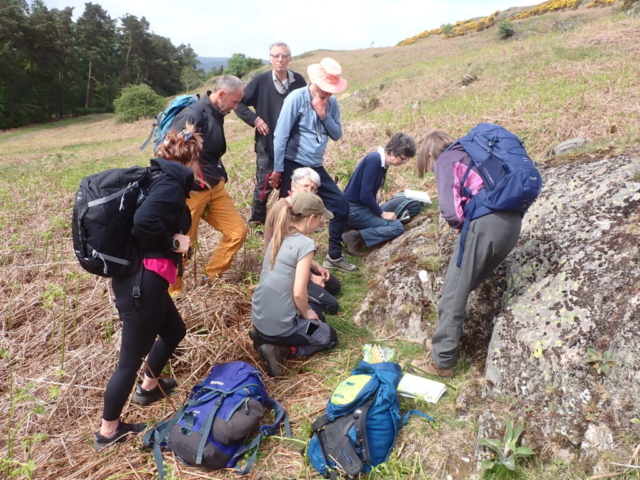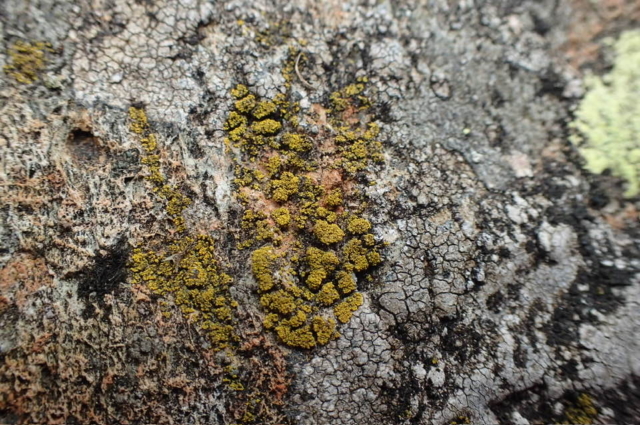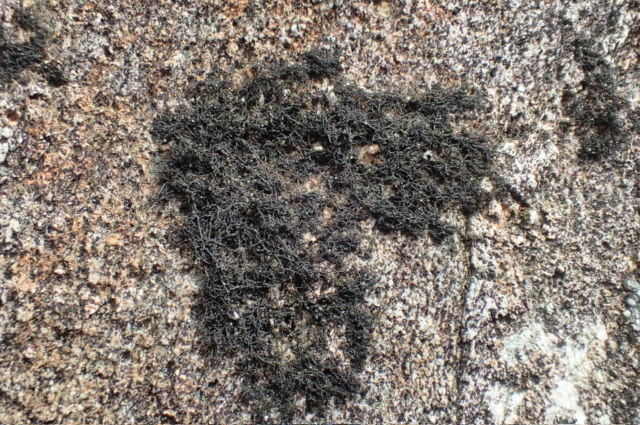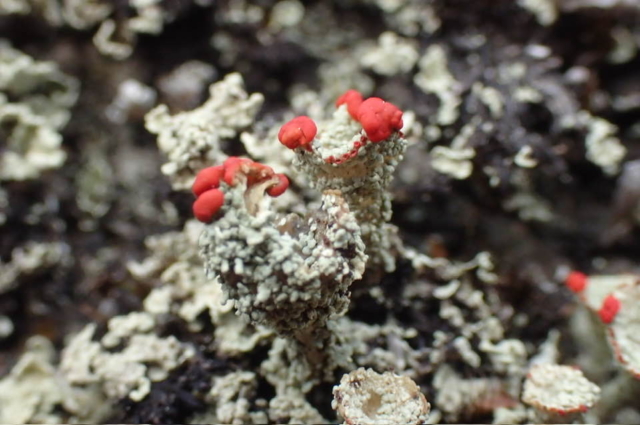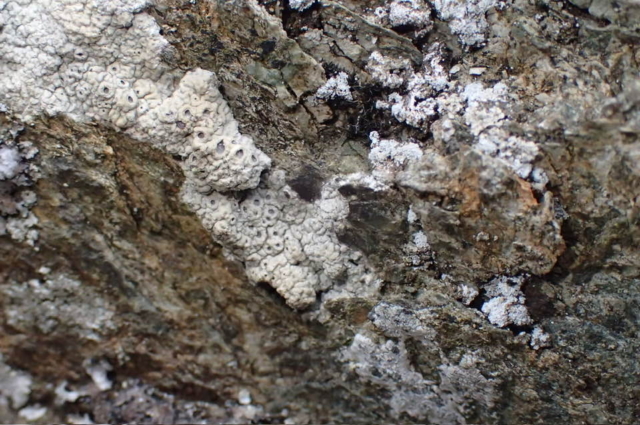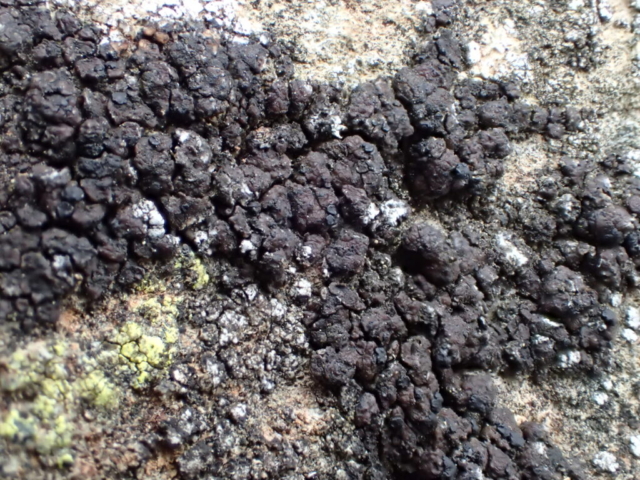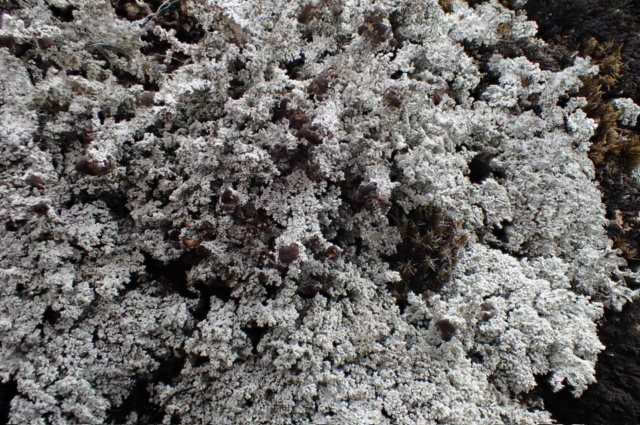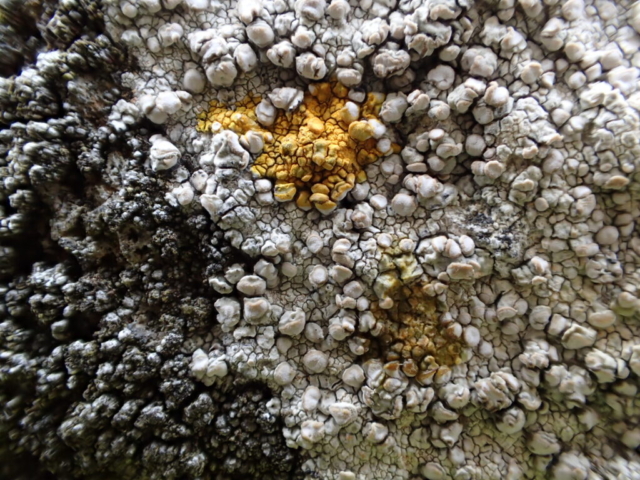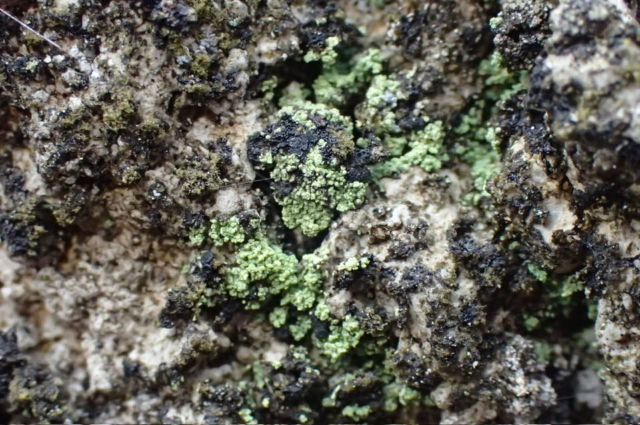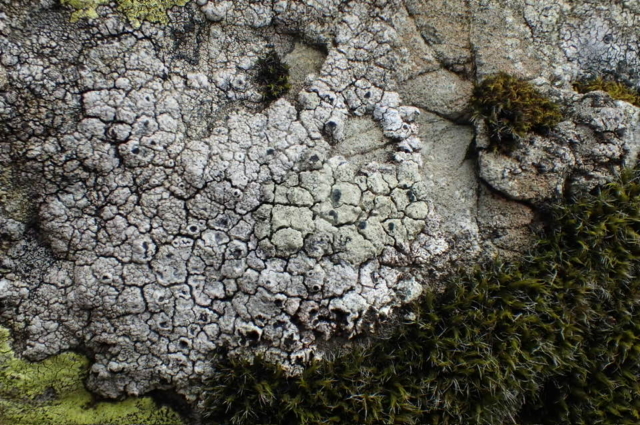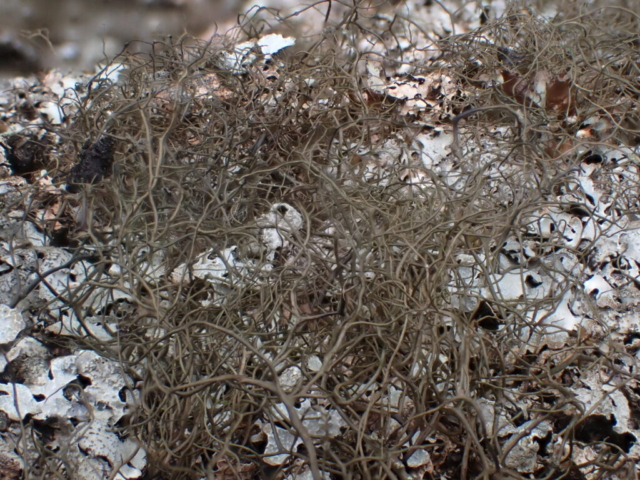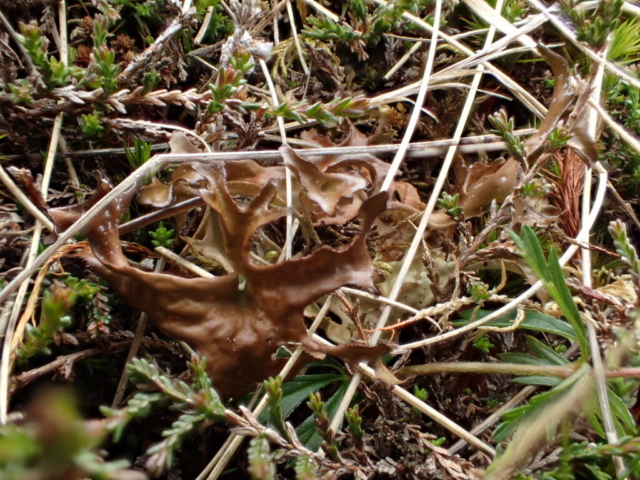Swindale, east of Haweswater
All the lichens looked beautiful, showing their fully hydrated colours. Admittedly, some were actually under water.
Two of us turned up to look at lichens, which is no surprise as this is our local patch so easy to escape home. It’s understandable that for everyone else it wasn’t worth a long drive in order to stand in the rain for several hours.
We’d been here a fair few times and mainly examined the birch, ash and hazel trees beside the path which runs along the bottom of the NW-facing slope below Gouther Crag, so this time we wandered uphill to look at the many boulders which had come down long ago from the crags above. On the way, there was the inevitable lichen-rich drystone wall where, in a dry recess, we saw an intriguing species later identified as Psoronactis dilleniana, new to us. It took a while back at home to work out what this was but luckily it was distinctive (unlike many saxicolous crusts) and Chris nailed it by flicking through the usually poor pictures in Dobson’s guide. The P+ yellow reaction and spore size matched. Interestingly our specimen had a pale but definite K reaction, confirmed by a blue colour under UV, whereas the literature has it as K-.
There was lots of Lecidea lithophila on boulders nearby with apothecia looking very plump and showing their dark brown colour, more visible when wet. Also on the wall was Diploschistes scruposus, looking very yellow, plus other crustose species such as Varicellaria lactea and Lepra aspergilla, separated by easy chemical tests. Unfortunately, wet lichens cause a drop of bleach instantly to spread out which dilutes the reaction (it’s harder or impossible to see) and potentially kills more of the lichen. There are good reasons why licheneering in the rain is a bad idea.
Moving up the vegetated boulder slope, we found Lecanora subcarnea, in a dry-ish NE-facing niche on an outcrop. We’d seen this before nearby in the valley and it was also spotted on the group trip to Burnbanks in May on the sheltered side of a huge boulder. Baeomyces rufus was another eye-catching crust on boulders.
We sheltered for lunch under a dripping holly at the base of a crag, where we found Schismatomma umbrinum and a lovely mosaic of Gyrographa gyrocarpa and Enterographa zonata (both used to be Opegrapha). The party trick of shining a UV torch on a well-covered rock produced spectacular results, Psilolechia lucida glowing orange and chlorophyll in random algae a deep maroon. Also here was Cystocoleus ebeneus, very finely filamentous but looking like black furry patches from a distance.
In order to warm up we wandered on, moving along then down the slope taking in trees on the way. An ash had Mycoblastus sanguinarius, usually found on acidic substrates. A final yellow-orange patch in a sheltered recess on a birch turned out to be Chaenotheca ferruginea with lots of tiny dark pins seen when we examined it closely. The small ornamented spherical spores were nice to see.
This is a great site that needs further visits to do it justice.
Text: Caz Walker. Photos: Chris Cant and Caz Walker

